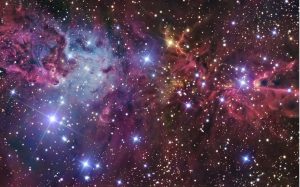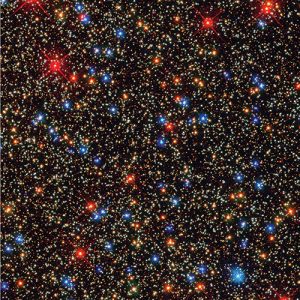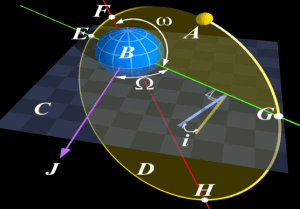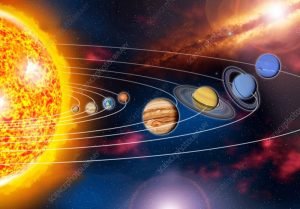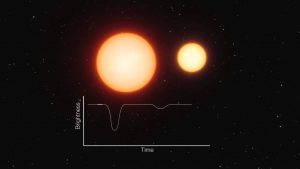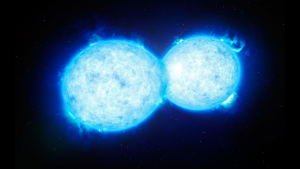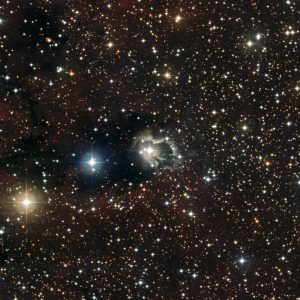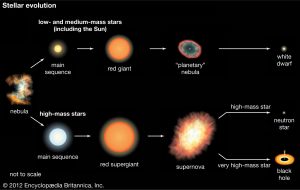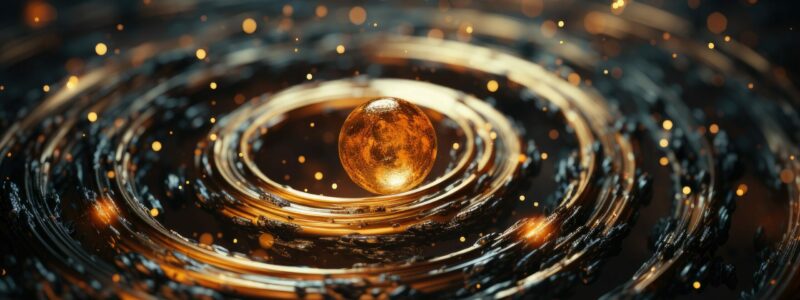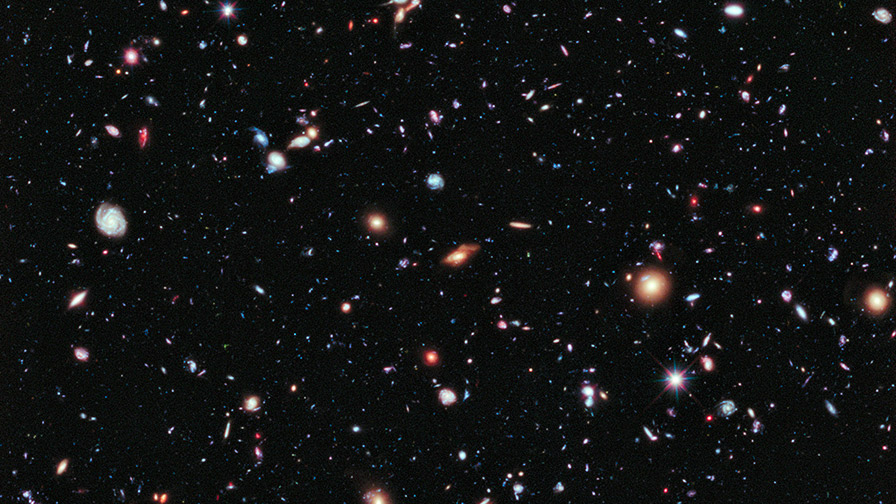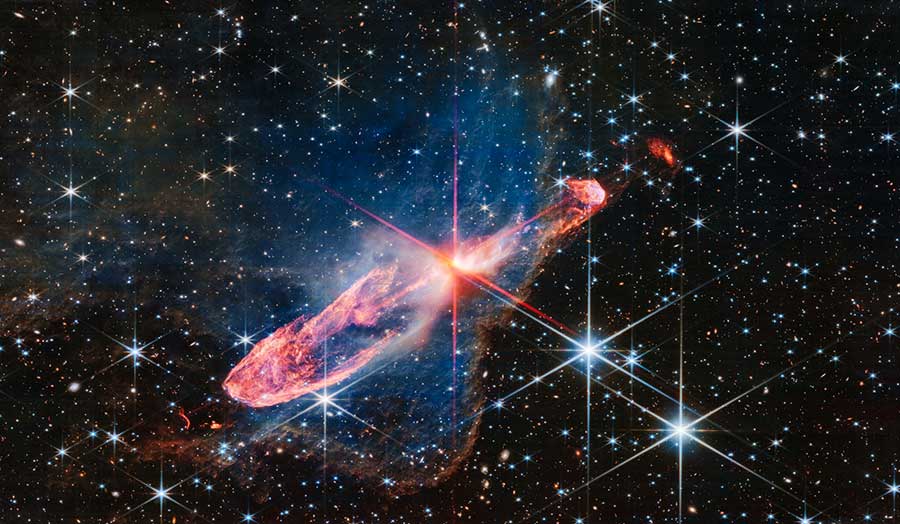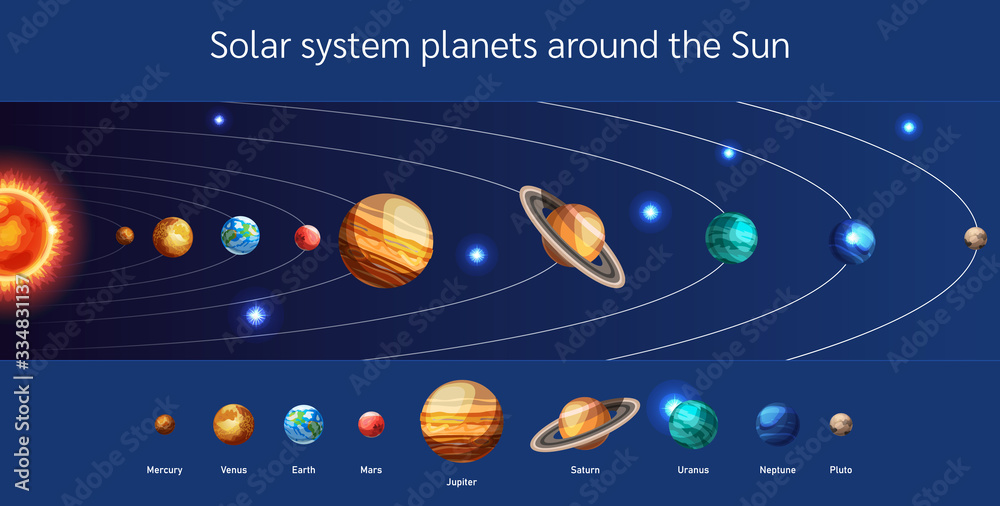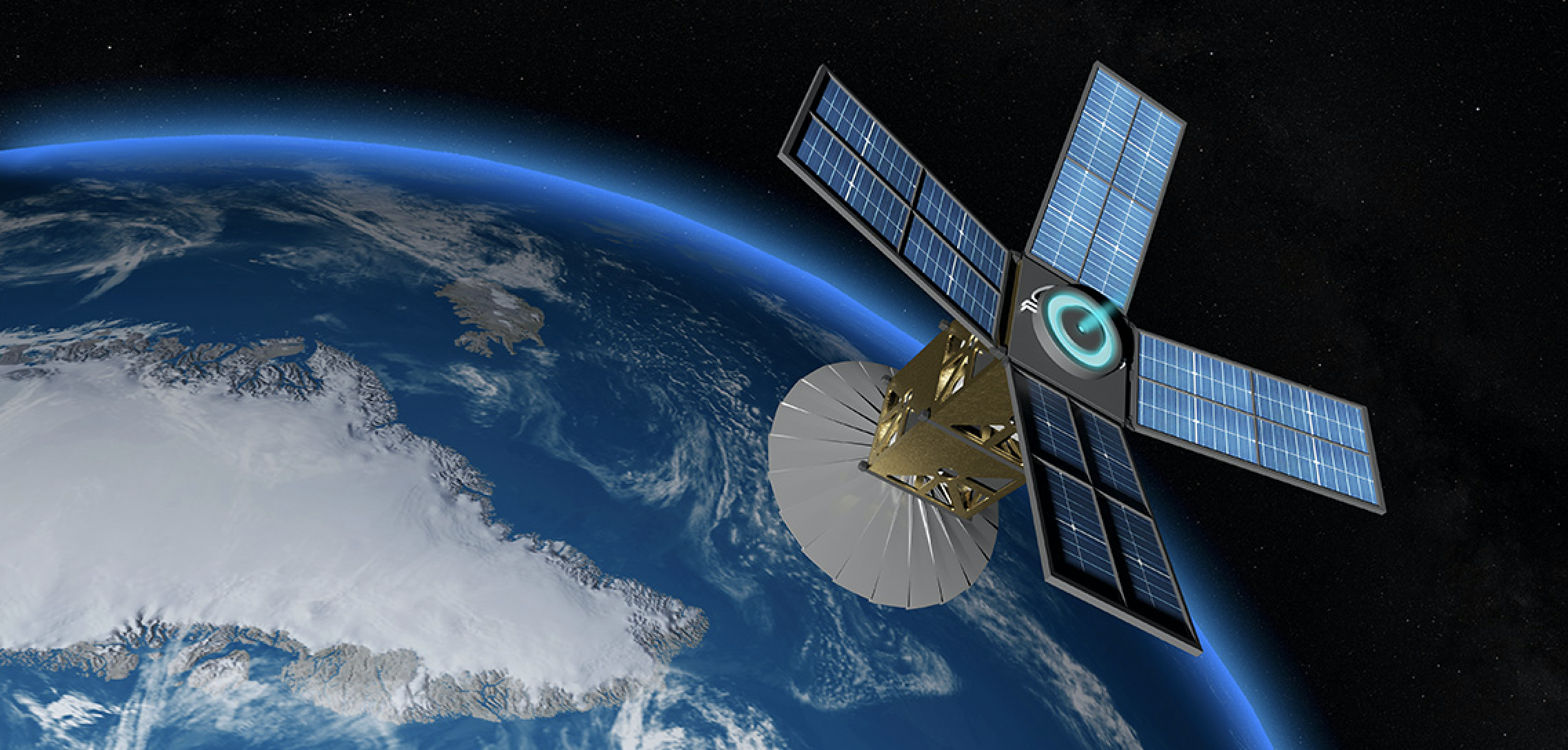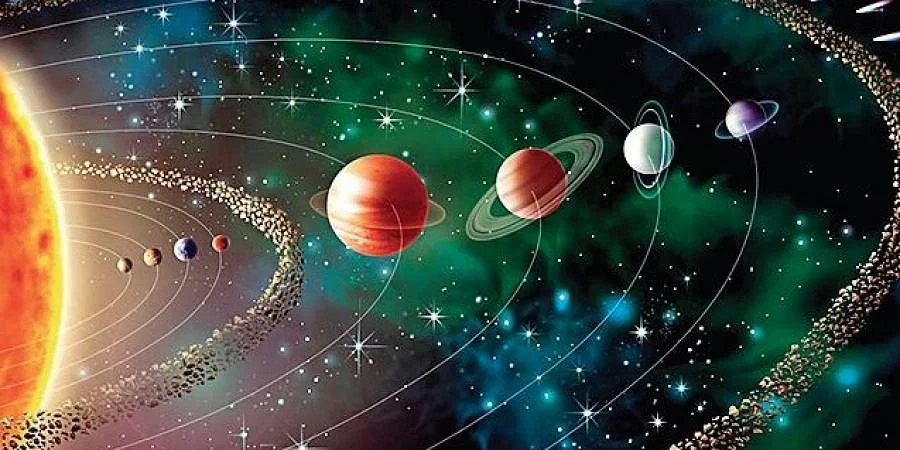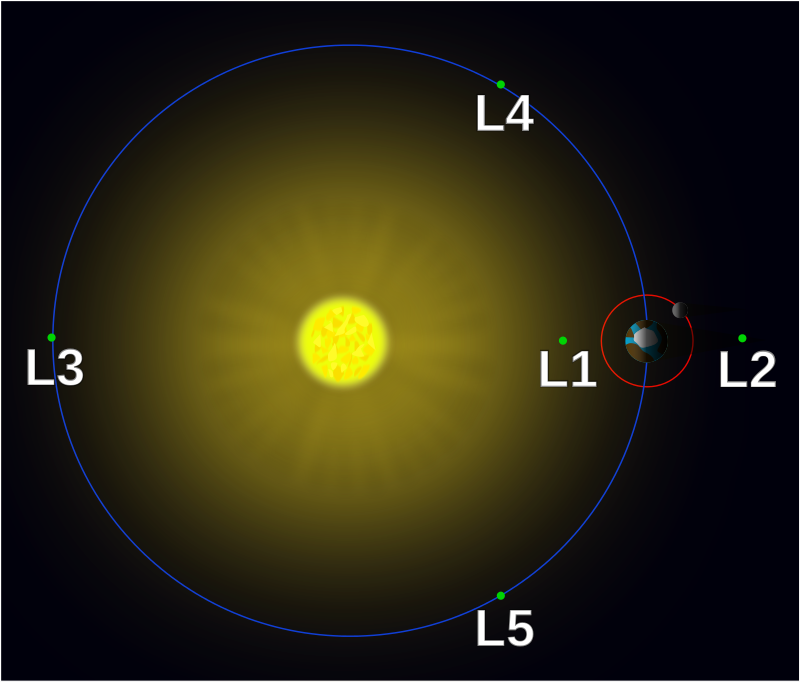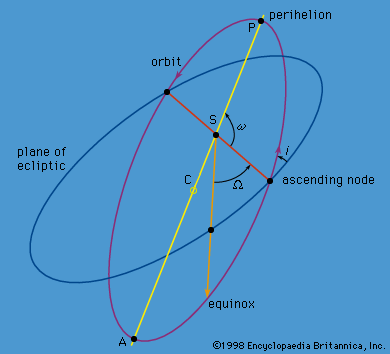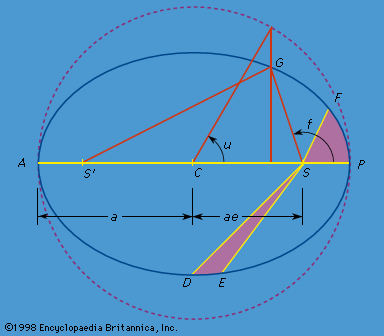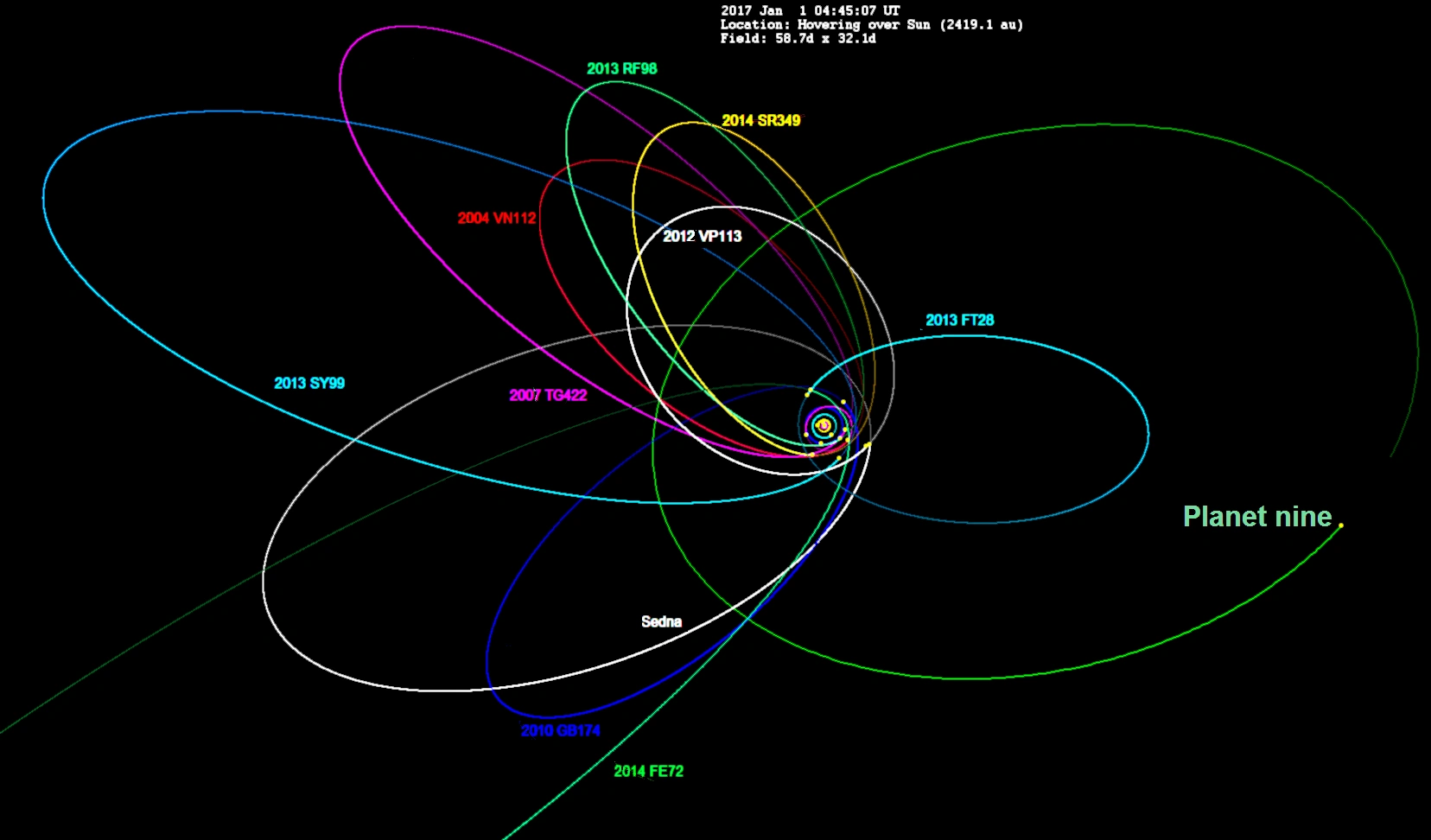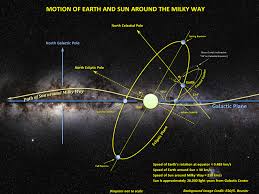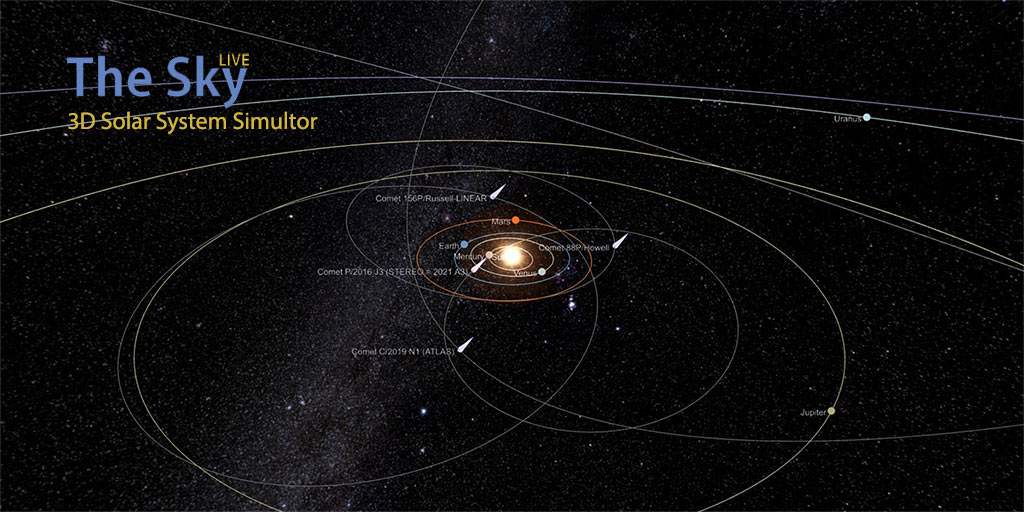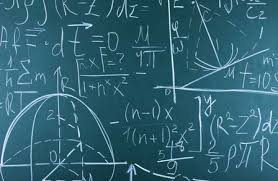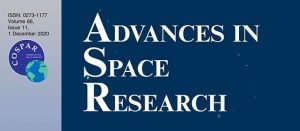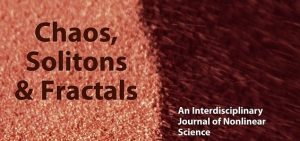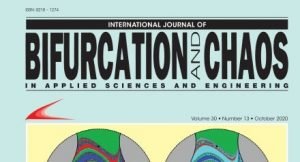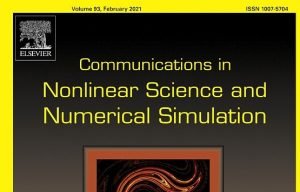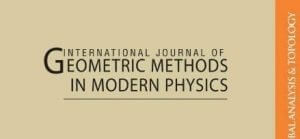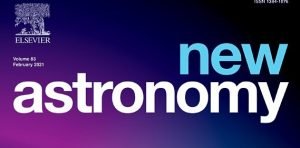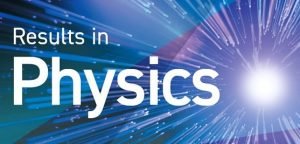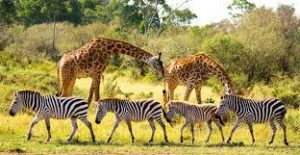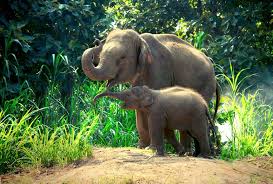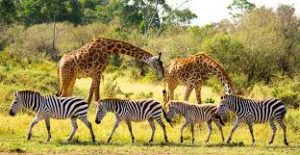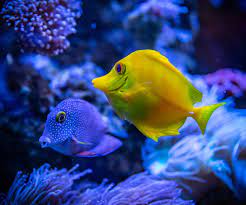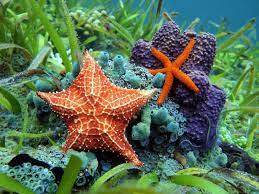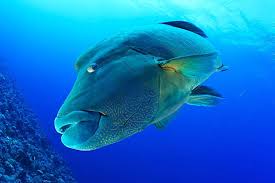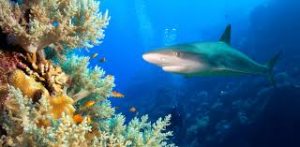
Head’s Message
The Stellar Astronomy Laboratory is considered one of the oldest laboratories of the Astronomy Department at the National Research Institute of Astronomy and Geophysics and the most diverse in terms of research study in the fields of astronomy and space exploration. Researchers in this laboratory are interested in studying stars, their origin, their surrounding environment, and the factors affecting their movement, whether through astronomical observations or mathematical theories and models. The laboratory’s activities are numerous, including research studies, supervision of students from various Egyptian universities, field training on meteorology and how to analyze and process it, as well as volunteer work and dissemination of astronomical culture. The Stellar Astronomy Laboratory includes an elite group of professors and researchers, as well as a supporting staff of research assistants (doctoral students) and research assistants (master’s students), who have had and still have an impact in publishing scientific papers in accredited international periodicals, as well as spreading astronomical culture through various means of communication.
From an engineering standpoint, the laboratory includes an elite group of professors and researchers specialized in various engineering fields, which supports study in the fields of astronomy in terms of controlling astronomical telescopes through computers using modern control methods and artificial intelligence. The group is also working on processing astronomical images that are monitored using modern observation cameras, such as CCD cameras, to ensure the identification of star images and to separate them from any other anomalies.
Within the framework of scientific discoveries, an outstanding work team from the laboratory succeeded many times in discovering the change of many stars that had not been known to change before, and then they were documented and registered with names bearing the name of the Kottamia Astronomical Observatory and the name of Egypt.
In the context of future studies and modern research trends, researchers seek to develop research methods, cooperate with foreign experts, and use new research tools, such as research in different bands such as radio, X-rays, and others that are received from celestial bodies.
The research topics in the stellar astronomy laboratory aim to study:
- Binary Stars (e.g., Eclipsing, Pulsating, Cataclysmic, and Visual Binaries).
- Modeling Stellar Atmospheres of Normal and High Density Stars
- Stellar Evolution and Formations.
- Dynamics of Stars and Stellar systems.
- Dynamical astronomy and Celestial Mechanics.
- Applications of Soft Computing in Astronomy.
Hope you enjoy reading our website and we look forward to your visit to our community.
Head of Laboratory
An Overview
 Astronomy is one of the oldest natural sciences. The early civilizations in recorded history made methodical observations of the night sky. These include the Egyptians, Babylonians, Greeks, Indians, Chinese, Maya, and many ancient indigenous peoples of the Americas. In the past, astronomy included disciplines as diverse as astrometry, celestial navigation, observational astronomy, and the making of calendars.
Astronomy is one of the oldest natural sciences. The early civilizations in recorded history made methodical observations of the night sky. These include the Egyptians, Babylonians, Greeks, Indians, Chinese, Maya, and many ancient indigenous peoples of the Americas. In the past, astronomy included disciplines as diverse as astrometry, celestial navigation, observational astronomy, and the making of calendars.
 Astronomy is the study of everything in the universe beyond Earth’s atmosphere. That includes objects we can see with our naked eyes, like the Sun, the Moon, the planets, and the stars. It also includes objects we can only see with telescopes or other instruments, like faraway galaxies and tiny particles. And it even includes questions about things we can’t see at all, like dark matter and dark energy.
Astronomy is the study of everything in the universe beyond Earth’s atmosphere. That includes objects we can see with our naked eyes, like the Sun, the Moon, the planets, and the stars. It also includes objects we can only see with telescopes or other instruments, like faraway galaxies and tiny particles. And it even includes questions about things we can’t see at all, like dark matter and dark energy.
Astronomy is a natural science that studies celestial objects and phenomena. It uses mathematics, physics, and chemistry in order to explain their origin and evolution. Objects of interest include planets, moons, stars, nebulae, galaxies, meteoroid, asteroid, and comets. Relevant phenomena include supernova explosions, gamma ray bursts, quasars, blazars, pulsars, and cosmic microwave background radiation. More generally, astronomy studies everything that originates beyond Earth’s atmosphere. Cosmology is a branch of astronomy that studies the universe as a whole.
Professional astronomy is split into observational and theoretical branches. Observational astronomy is focused on acquiring data from observations of astronomical objects. This data is then analyzed using basic principles of physics. Theoretical astronomy is oriented toward the development of computer or analytical models to describe astronomical objects and phenomena. These two fields complement each other. Theoretical astronomy seeks to explain observational results and observations are used to confirm theoretical results.
Astronomy is one of the few sciences in which amateurs play an active role. This is especially true for the discovery and observation of transient events. Amateur astronomers have helped with many important discoveries, such as finding new comets.
The importance of astronomy in the development of space technology and our lives can be embodied as follows:
- Astronomy has played and continues to play a foundational role in driving humankind’s passion for space exploration.
- Astronomy facilities support many critical functions of space exploration and space science.
- The best science requires both space and ground astronomy facilities.
- Astronomy is an important source of technology and capacity development for a global space economy
- Astronomers may one day save humanity on Earth, and then the Moon.
Mission, Vision & Objectives
Vision
Leadership and excellence in scientific research and effective community partnership in accordance with international quality standards. The Stellar Laboratory aspires to be a global leader in stellar astronomy, astrophysics and dynamical astronomy. To be recognized in pioneering research and novel contributions in the field of stellar astronomy. We aspire to be at the forefront of cutting-edge research, continuously pushing the boundaries of knowledge about stellar phenomena. Our vision extends to fostering a collaborative and interdisciplinary environment where diverse perspectives converge to address the most pressing questions about stars, their formation, evolution, and their profound influence on the universe. It also unlocks the intricate nature of celestial bodies in the cosmos, providing profound insights into the fundamental laws governing their motions.
Mission
The laboratory seeks to achieve distinguish and innovation in research performance to be scientific reference in the fields of astronomy, scientific research and community development by relying on consolidating the values of quality and keeping pace with modern developments in the fields of specializations offered by NRIAG.
The mission of the Stellar Laboratory is to delve into the cores of stars and unlock the secrets of their formation and evolution through accomplishing:
-
Promote our understanding of the life cycles of stars, from their birth in cosmic nurseries to their spectacular deaths as supernovae or the peaceful fade into white dwarfs.
-
Strive to contribute crucial insights into the fundamental processes that govern the behavior and properties of stars, which serve as the cosmic factories responsible for synthesizing the elements that make up our universe through experimental observations, theoretical modeling, and simulation.
-
Use celestial mechanics laws, principles of physics and mathematics to understanding the motion and gravitational interactions of celestial bodies such as stars, planets, moons, asteroids, comets, and satellites to identify their positions, orbits, and dynamical behavior over time.
Objectives
The laboratory aims to foster an innovative and inspiring scientific environment for researchers, attractive to talented researchers staff members, and conducive to a strong partnership with society and the industrial sector.
The objectives of the Stellar Laboratory are deeply rooted in the pursuit of knowledge and understanding of the celestial bodies that illuminate our universe by achieving the following goals:
- Qualifying young researchers scientifically and intellectually by providing them with the basic knowledge and skills to support their abilities to deal with any modern developments.
- Conducting theoretical, experimental, applied and comparative research in various fields of Stellar Astronomy.
- Encouraging research, scientific communication, and publishing in prestigious scientific journals
- Encouraging attendance and participation in conferences, scientific seminars, training courses and workshops
- Employing scientific research to serve and develop society.
- Constantly striving to develop research programs in accordance with international research standards.
- Contributing to the formation of an advanced scientific base in those specializations offered by the NRIAG and according to international research standards.
- Creating new specializations and branches of study that keep pace with scientific development, with a focus on the use of modern technologies.
- Forming distinguished research schools that are part of the integrated research system that the Astronomy Department seeks to achieve.
- Forming beneficial partnerships among the laboratory, public and private sector institutions, which contributes to achieving the goals of development programs in Egypt in accordance with Vision 2030.
Members of Stellar Astronomy Laboratory
| Name | Title | Specialist | |
|---|---|---|---|
| Ibrahim Zead Ibrahim | Researcher | z_ibrahim_zead@yahoo.com | Astrophysics |
| Yosry Ahmed Azzam | Full Professor | yosryahmed@yahoo.co.uk | Engineering |
| Waleed Hamdy Elsanhoury | Full Professor | welsanhoury@gmail.com | Astrophysics |
| Nabil Shoukry Awadalla | Emeritus Professor | snawadalla@yahoo.com | Astrophysics |
| Samah Hosney Elessawy | PhD Student | samahessawy1122@gmail.com | Astrophysics |
| Mohammed Ahmed El-Sadek | Researcher | sadek2001eg@yahoo.com | Astrophysics |
| Mohamed Abdelsabour Abdellatif | Full Professor | sabourabdellatif@yahoo.com | Astrophysics |
| Somaya Saad Mohamed Saad | Emeritus Professor | saadmhsaad@gmail.com | Astrophysics |
| Abdelnabi Saad Saad | Full Professor | saad6511@gmail.com | Celestial Mechamics |
| Nihad Saad Abd El Motelp | Researcher | nihad.saad@yahoo.com | Astrophysics |
| Mohamed Said Darwish | Researcher | msd300@yahoo.com | Astrophysics |
| Magdy Rabie Sanad | Full Professor | mrsanad1@yahoo.com | Astrophysics |
| Mohamed Abdelkareem Mohamed | PhD Student | mohamed.abdelkareem@nriag.sci.eg | Engineering |
| Magdy Abd El Malek Hanna | Emeritus Professor | magdyh_nriag06@yahoo.com | Astrophysics |
| Mohamad Hassan El Deps | PhD Student | m_deps2000@yahoo.com | Astrophysics |
| Mohamad Ahmad El- Khamisy | Researcher | lkhmsy@yahoo.com | Astrophysics |
| Islam Mohamed Helmy | PhD Student | islam_helmy89@hotmail.com | Engineering |
| Hadia Hassan Seliem | Emeritus Professor | hassanselim@yahoo.com | Celestial Mechanics |
| Nasr Mahrous Ahmed | Associate Professor | gravitation300@yahoo.com | Astrophysics |
| Ghada Farouk Mohamedien | Researcher | ghfm2006@yahoo.com | Astrophysics |
| Gmal Mohamed Nagib | Researcher | gamaledin@gmail.com | Astrophysics |
| Farag Ebrahim Uones | Associate Professor | faragelnagahy@hotmail.com | Engineering |
| Ahmed Essam Elsayed | Emeritus Professor | essam60@yahoo.com | Astrophysics |
| Mohamed Esmail Emam | Researcher | eng.m_esmail@yahoo.com | Engineering |
| Elbaz I. Abouelmagd | Full Professor | eabouelmagd@gmail.com | Celestial Mechanics |
| Diaa Abd El Rady Fouda | Researcher | diafouda@yahoo.com | Astrophysics |
| Magdy Mahrous Elkhateeb | Full Professor | cairo_egypt10@yahoo.com | Astrophysics |
| Mohamed Shaban Aboueisha | PhD Student | astromohamed@yahoo.com | Astrophysics |
| Mahmoud Hassan Shehata | Researcher | arl_mahmoud@yahoo.com | Celestial Mechanics |
| Amal Sayed Hamed | PhD Student | amalsayd88@yahoo.com | Astrophysics |
| Ahmed Shokry Elshaer | Associate Professor | ahmedsh_11@yahoo.com | Astrophysics |
| Mohamed Ibrahim Nouh | Full Professor | abdo_nouh@hotmail.com | Astrophysics |
| Ahmed Nakhlawy Hussein | PhD Student | a_nakh_astro@yahoo.com | Astrophysics |
| Farouk Abd El Badeaa | E. Assoc. Professor | Astrophysics |
Research Interests
Astrophysics
Astrophysics is a branch of Astronomy concerned primarily with the properties and structure of cosmic objects, including the universe as a whole. Astrophysics is a science that employs the methods and principles of physics and chemistry to study astronomical objects and phenomena. The Astrophysics branch “seeks to ascertain the nature of the heavenly bodies, rather than their positions or motions in space–what they are, rather than where they are.
The following topics are in the scope of our study:
- Stellar Astrophysics
- Theoretical Astrophysics
- Dynamical Astrophysics
- Radio Astronomy
- Observational Astronomy
Celestial Mechanics and Space Dynamics
Celestial mechanics is the branch of astronomy or applied mathematics that deals with the motions of objects in outer space based on the law of gravitation. Historically, Celestial Mechanics applies principles of physics (classical mechanics) to astronomical objects, such as stars and planets, to produce ephemeris data. It was founded by Newton and it is the oldest of the chapters of Physical Astronomy. Newton’s theory of universal gravitation resulted from experimental and observational facts, which were those encompassed in the three Kepler laws. Celestial Mechanics was one of the first branches of science to explore the consequences of the General Relativity Theory. Furthermore, it the first gate to establish astrodynamics science and space missions. Celestial mechanics is the branch of Astronomy devoted to the study of the motion of celestial bodies.
Astrodynamics (also called space dynamics or space mechanics) is the branch of space science that is devoted to analysis and construct the motion of artificial bodies. Both topics of Celestial Mechanics and Space Dynamics can be considered as branches of applied mathematics. Celestial mechanics is oriented fundamentally toward scientific objectives, while astrodynamics, in addition to scientific interest, is also connected with the analysis and solution of engineering problems. The scientific aims of space explorations or space technology cannot be done without astrodynamics activities.
While Orbital mechanics is the study of the fundamental laws, that are governing the motion of natural or artificial bodies around others. It is a common and vital tool in both celestial mechanics and astrodynamics. Orbital mechanics is the applications of celestial and ballistics mechanics to study the motion of spacecraft and rockets. The motion of these objects is usually constructed by Newton’s laws of motion and the universal gravitation law.
 In general, Celestial Mechanics treats the orbital dynamics of dynamical systems under the effect of gravity, including spacecraft or natural celestial bodies such as moons systems star, planets, and comets. While Orbital Mechanics focuses on spacecraft trajectories, involving orbital maneuvers, space rendezvous, orbit plane changes, and interplanetary transfers. It can be used also to study the controlled flight trajectories of spacecraft.
In general, Celestial Mechanics treats the orbital dynamics of dynamical systems under the effect of gravity, including spacecraft or natural celestial bodies such as moons systems star, planets, and comets. While Orbital Mechanics focuses on spacecraft trajectories, involving orbital maneuvers, space rendezvous, orbit plane changes, and interplanetary transfers. It can be used also to study the controlled flight trajectories of spacecraft.
 Some problems and techniques are common to astrodynamics and celestial mechanics, and these receive, of course, great confirmation at the current time. For examples, the problems of two–body and three–body, they are at the common focal point of astrodynamics and celestial mechanics.
Some problems and techniques are common to astrodynamics and celestial mechanics, and these receive, of course, great confirmation at the current time. For examples, the problems of two–body and three–body, they are at the common focal point of astrodynamics and celestial mechanics.
 But Dynamic Astronomy is a much broader term, which, in addition to Celestial Mechanics and Astrodynamics, is usually interpreted to include all aspects of celestial bodies motion (e.g., rotation, tidal evolution, mass and mass distribution determinations for stars and galaxies, fluid motions in nebulas, and so forth).
But Dynamic Astronomy is a much broader term, which, in addition to Celestial Mechanics and Astrodynamics, is usually interpreted to include all aspects of celestial bodies motion (e.g., rotation, tidal evolution, mass and mass distribution determinations for stars and galaxies, fluid motions in nebulas, and so forth).
Thus, our studies are oriented to four major fields:
- Celestial Mechanics
- Astrodynamics
- Orbital Mechanics
- Dynamical Astronomy
Astronomical Engineering Research
Astronomical Engineering is a branch in the Stellar Astronomy laboratory that is responsible for all of the Astronomical Telescopes and the instruments attached to them. It also deals with thin film doping and mirror coatings using the highly advanced aluminizing plant at Kottamia Observatory. The plant is operated by the up-to-date SIEMENS Programmable Logic Control (PLC). Engineers at the Stellar laboratory can do research and implement any industrial engineering operations that use image processing, artificial intelligence, and machine learning techniques. Moreover, the branch is a collaboration between engineering and scientific staff at NRIAG in the fields of site testing and astronomical instrumentations, data reduction, and astronomical software development.
The fields of astronomical engineering at the laboratory of stellar astronomy include the following:
- Control of astronomical telescopes using modern control theories
- Control of astronomical thin-film coating instruments
- Astronomical Instrumentations.
- Artificial intelligence (AI) and machine learning (AI) tools related to astronomy
- Ground and space-based hardware and software tools and systems
- Computational Astrophysics
Research Groups
Physics of Stars Research Group
While stellar materials are not the bulk of the Galaxy, they are highly significant. Within the standard table of elements, several natural elements are synthesized into stars. Stars motion shows the space force on scales from planetary systems to Galaxies. A light emerges from a disk of gas deposits, probably associated with a solar structure. Stars survive if it needs to consume their nuclear fuel and dies with a knock, or they gradually leave and restores much of the star content to the earth.
- Model Atmosphere Analysis of Stellar Spectra.
- Modeling Stellar Atmospheres and Interiors.
- Stellar Evolution and Star Formation.
- Spectroscopic and Photometric Studies of Variable Stars.
- Study of Eclipsing Variable Stars.
- Radio Astronomy
- Observational Astronomy
Celestial Mechanics and Space Dynamics Research Group
Understanding the motion of celestial objects, spacecrafts and satellites is considered a core area in space, which underpins and enables of space exploration and establish space missions.
The group work is oriented to following areas:
- Astronomical Dynamical Systems
- Perturbation Techniques
- Dynamics of body problems (N≥2) with its Astrophysical Applications
- Dynamics of Small Celestial Bodies (Asteroids, Satellites, Comets, etc.)
- Binary and Other Few-Body Systems
- Motion of relativistic binaries: Neutron Stars and Black Holes
- Dynamical Stability of Extra-solar System
- Planets Motion in the Habitable Zone
- Orbital Dynamics in Deep Space Exploration
- Gravitational Potential of Galaxies and Galactic Dynamics
- Periodic and Stability Motion in Space
- Numerical Integration Codes and
- Computational Methods in Celestial
- Interplanetary and Lunar Trajectories
- Chaotic Dynamics in the Motion of Celestial Objects
- Orbit and Attitude Determination
- Attitude Dynamics
- Relative Motion and its Applications
- Spacecraft Formation Flying
- Spacecraft Propulsion
- Mission Design and Analysis
Astronomical Engineering Research Group
Engineering on an astronomical scale, or astronomical engineering, i.e., engineering involving operations with whole Astronomical Objects (planets, stars, etc.), is a known theme in science fiction, as well as a matter of recent scientific research and exploratory engineering.
The engineering group’s work is devoted to studying:
- Image Processing of Astronomical Images
- Artificial Intelligence (AI) and Machine Learning (ML) Control Astronomical Telescopes
- Programmable Logic Control (PLC) of Astronomical Thin-Film Coating Instruments
- Identifying Images of Astronomical Objects Using Knowledge-Based Systems, Artificial Neural Networks (ANN), and Deep Learning (DL) Techniques
- Modeling Fractional Astrophysical Problems Using ANN Techniques
- Prediction of the Atmospheric Uundamental Parameters Using ANN
Scientific Publications
Publications 2023
- Abd El Motelp, N., Radwan, M. Periodic Orbits Around the Triangular Points with Prolate Primaries. Artificial Satellites. (2023), 58 (1): 1-13.
- Aboueisha, M.S., Nouh, M.I., Abdel-Salam, E.A.-B.,Beheary, M.M., Gadallah, K.A.K. Analysis of the fractional relativistic polytropic gas sphere. Scientific Reports, (2023), 13(1), 14304
- Abouelmagd E. I. , Guirao J. L. G. , Llibre J. On the Periodic Orbits of the Perturbed Two-and Three-Body Problems. Galaxies. (2023) 11(2): 58
- Abouelmagd E. I. , Guirao J. L. G. , Llibre J. Periodic Orbits of Quantised Restricted Three-Body Problem. Universe (2023) (9): 149
- Ahmed, N., Alfreedi, A.A., Alzulaibani, A.A. Some cosmological features of 4D Gauss-Bonnet gravity with varying cosmological constant. International Journal of Geometric Methods in Modern Physics. (2023), 20, 2350053.
- Alenazi, M. S., Elkhateeb, M. M. Photometric Study and Orbital Solution for Some Newly Discovered Eclipsing Binary Systems. Astrophysics. (2023), 66: 24-36.
- Alhowaity S., Abouelmagd E. I. , Diab Z., Guirao J. L., Calculating periodic orbits of Hénon-Heiles system. Astron. Space Sci. (2023) 9: 945236
- Alhowaity S., Selim H. H., Gao F., Pathak N. M., Abouelmagd E. I., New approach to regularize the perturbed two–body problem. Applied Mathematics and Nonlinear Sciences (2023) Accepted
- Doshi M .J., Pathak N. M., Abouelmagd E .I. Single Variable Regression Model with Error Analysis for Evolution of Periodic Orbit in Formation Satellite. In Mathematical Modeling, Computational Intelligence Techniques and Renewable Energy: Proceedings of the Third International Conference, MMCITRE 2022, pp. 275-286. Singapore: Springer Nature Singapore, (2023)
- Doshi M. J., Pathak N. M. , Abouelmagd E. I., Periodic orbits of the perturbed relative motion. Advances in Space Research. (2023) 72 (6) 2020–2038
- Edris, Kh., Darwish. M. S. Dust emissions and OH masers: evidence for tracing advanced stages of HMPOs. The European Physical Journal Plus. (2023) 138 (8): 717.
- El-Depsey, M.H., Hendy, Y.H.M., Shokry, A., Abdelbar, A.M., Beheary, M.M.
Study of solar neighborhood open cluster NGC 6475 and 11 possible members B-type stars. Journal of Astrophysics and Astronomy. (2023), 44, 65. - El-Depsey, M.H., Shokry, A., Hendy, Y.H.M., Abdelbar, A.M., Beheary, M.M.
Analysis of the B-stars in field of the solar neighborhood young open cluster IC 2391 using UVES spectra and Gaia DR3. New Astronomy. (2023), 100, 101988. - Elkholy E., Nouh M. I., Fractional Order Analysis of the Polytropic Models Applied to Exoplanets, Bulgarian Astronomical Journal (2023): 38: 98.
- Ershkov S., Abouelmagd E. I., Rachinskaya A., Perturbation of relativistic effect in the dynamics of test particle. Math. Anal. Appl. (2023) 524 (1): 127067
- Ershkov S., Leshchenko D., Prosviryakov E. Y., Abouelmagd E. I., Finite-Sized Orbiter’s Motion around the Natural Moons of Planets with Slow-Variable Eccentricity of Their Orbit in ER3BP. (2023) 11 (14): 3147.
- Hadia H. Selim, Solving Differenced Kepler’s Equation Using Homotopic Continuation Method. International Astronomy and Astrophysics Research Journal(2023) 5(1): 97; Article no.IAARJ.99872.
- Helmy, I., Choi, W. Machine learning-based automatic focusing for high magnification systems. Engineering Applications of Artificial Intelligence. (2023), 118, 105648.
- Helmy, I., Tarafder, P., Choi, W. GRU Model-Based Channel Prediction for One-Bit Massive MIMO System. IEEE Transactions on Vehicular Technology. (2023), 72 (8): 11053-11057.
- Kann, D.A., Agayeva, S., Aivazyan, V., Alishov, S., Andrade, C.M., Antier, S., Baransky, Fouad, Shokry, Takey, A., Tillayev, Y., et. al. GRANDMA and HXMT Observations of GRB 221009A: The Standard Luminosity Afterglow of a Hyperluminous Gamma-Ray Burst—In Gedenken an David Alexander Kann. Astrophysical Journal Letters. (2023), 948, 12.
- Miaa R., Prasadua P. R. , Abouelmagd E. I., Analysis of stability of non-collinear equilibrium points: Application to Sun–Mars and Proxima Centauri systems. Acta Astronautica (2023) 104: 199 – 206
- Nouh M. I., E. A-B. Abdel-Salam, Y. A. Azzam, Artificial Neural Network Approach for Relativistic Polytrope. Scientific African (2023) 20: e01696
- Nouh, M.I., Abdel-Sabour, M., Shokry, A., Hamed, G.M., Fouda, D.A., Takey, A. Spectroscopic and photometric study of the new δ Scuti star ASAS J063309+1810.8. New Astronomy. (2023), 98, 101898
- Patel B. M. , Pathak N. M., Abouelmagd E. I. Analysis of Resonant Periodic Orbits in the Framework of the Perturbed Restricted Three Bodies Problem. Universe. (2023) 9 (5): 239
- Patel B. M. , Pathak N. M., Abouelmagd E. I. Analysis of Third-Order Resonant Periodic Orbits in Perturbed Circular Restricted Three-Body Problem. Mathematical Modeling, Computational Intelligence Techniques and Renewable Energy: Proceedings of the Third International Conference, MMCITRE 2022, pp. 77-89. Singapore: Springer Nature Singapore, (2023)
- Sheth D., Pathak N. M., Thomas V. O., Abouelmagd E. I., Analysis of Exterior Resonant Periodic orbits in the Photogravitational ERTBP. Archive of Applied Mechanics (2023) (93): 2079 – 2112
- Sheth D., Pathak N. M., Thomas V. O., Abouelmagd E. I., Periodic orbits analysis of elliptical Sun–Saturn system. Astronomy Reports. (2023) 67 (5): 520–535
- Shloof A. M., Senu N., Ahmadian A., Nouh M. I. , Soheil S., A Novel Fractal-Fractional Analysis of the Stellar Helium Burning Network using Extended Operational Matrix Method. Physica Scripta. (2023), 98 (3), 034004.
Publications 2022
- Abdelaziz, A.E., Saad, S.M., Hendy, Y.H.M., Shokry, A., Kamal, F.Y. An astrometric and photometric study of the young open cluster NGC 2168 and its possible member [NBN2015]77. New Astronomy. (2022), 92, 101727
- Abdel-Sabour, M., Nouh, M.I., Shokry, A., Hamed, G.M., Ismail, H.A., Takey, A., Ata, S.A., Zead, I. Photometric and Spectroscopic Analysis of the SX Phe Star BL Cam. Astrophysics. (2022), 65 (4), pp. 456-469.
- Abouelmagd E. I. , Alhowaity S., Diab Z., Guirao J. L., Shehata M. H. On the Periodic Solutions for the Perturbed Spatial Quantized Hill Problem. Mathematics (2022) 10 (4): 614
- Abouelmagd E. I., Ansari A. A., Dynamical properties of body with variable mass in a fifth–degree Hénon–Heiles system. Astronomy Reports (2022) 66 (1): 64–74
- Ahmed, N., Kamel, T. and Nouh, M. I., 2022, A Non-Singular Closed Bouncing
Universe Without Violation of Null Energy Condition, Revista Mexicana de Astronomía y Astrofísica, 58, 245. - Ahmed, N., Kamel, T.M., Nouh, M.I. A NON-SINGULAR CLOSED BOUNCING UNIVERSE WITHOUT VIOLATION OF NULL ENERGY CONDITION. Revista Mexicana de Astronomia y Astrofisica. (2022), 58 (2), pp. 245-255.
- Ahmed, N., Pradhan, A. Probing cosmic acceleration in κ(R, T) gravity. Indian Journal of Physics. (2022), 96 (1), pp. 301-307.
- Alenazi, M.S., Elkhateeb, M.M. First Light Curve Modelling of Eclipsing Binary Systems V1264 Cas, V0664 Lac and GSC 0199-2035. Astrophysics. (2022), 65 (4), pp. 470-482.
- Alenazi, M.S., Elkhateeb, M.M. Photometric Study and Evolutionary State for Some Newly Discovered W UMA Systems. Astrophysics. (2022), 65 (2), pp. 182-192.
- Al-Johani, A.S., Elsanhoury, W.H., Al-Anzi, A., Al-Jaber, B., Al-Bishi, F., Kanaan, N., Al-Atwi, R., Al-Khubrani, R., Al-Anzi, S. The Hyades Kinematical Structure with Gaia Era. Indian Journal of Pure and Applied Physics. (2022), 60 (3), pp. 268-273.
- Al-Johani, A.S., Elsanhoury, W.H., Al-Juhani, A., Al-Qadhi, G., Al-Anazi, M., Al-Balwi, S., Al-Hamdi, S., Al-Qahtani, S., Al-Shehri, W. Hyades Kinematics and the Relationship Between Galactic Coordinates and its Angular Distance from the Apex with Gaia EDR3. Kinematics and Physics of Celestial Bodies. (2022), 38 (5), pp. 240-247.
- Amer, M., Mito, M., Essam, A., Bayoumi, S. Case study for optimum techno-economic integration of PV and anaerobic digestion for sustainable agri-business. Energy Reports. (2022), 8, pp. 362-375.
- Ansari A. A. , Alhowaity S. , Abouelmagd E. I., Sahdev K., Analysis of Equilibrium Points in Quantized Hill System. Mathematics (2022) 10(13): 2186
- Azzam, Y.A., Elnagahy, F.I.Y., Ali, G.B., Essam, A., Saad, S., Ismail, H., Zead, I., Ahmed, N.M., Yoshida, M., Kawabata, K.S., Akitaya, H., Shokry, A., Hendy, Y.H.M., Takey, A., Hamed, G.M., Mack, P. Kottamia Faint Imaging Spectro-Polarimeter (KFISP): opto-mechanical design, software control and performance analysis. Experimental Astronomy. (2022), 53 (1), pp. 45-70.
- Bhardwaj, V.K., Pradhan, A., Ahmed, N., Shaker, A.A. Cosmographic analysis of a closed bouncing universe with the varying cosmological constant in f(R, T) gravity. Canadian Journal of Physics. (2022), 100 (11), pp. 475-484.
- Bisht, D., Zhu, Q., Elsanhoury, W.H., Sariya, D.P., Rangwal, G., Yadav, R.S., Durgapal, A., Jiang, I.-G. Erratum: Detailed analysis of the poorly studied northern open cluster NGC 1348 using multi-color photometry and GAIA EDR3 astrometry. Publications of the Astronomical Society of Japan. (2022), 74 (2), p. 492.
- Bisht, D., Zhu, Q., Elsanhoury, W.H., Yadav, R.K.S., Rangwal, G., Sariya, D.P., Durgapal, A., Jiang, I.-G. A Comprehensive Study of Five Intermediate-age Pismis (2, 3, 7, 12, 15) Clusters Using Photometric and Astrometric Data from Gaia EDR3. Astronomical Journal. (2022), 164, 171.
- Doshi M. J., Pathak N. M., Abouelmagd E. I., Multivariate Regression Analysis and Error Estimation in Formation Satellite. Astronomy Reports (2022) 66 (7): 616 – 628
- Elsanhoury, W.H., Al-Johani, A.S., El Fewaty, N.H., Haroon, A.A. Distance determination by magnitude analysis of some open clusters with GAIA era and stellar luminosity function. Contributions of the Astronomical Observatory Skalnate Pleso. (2022), 52 (1), pp. 32-45.
- Elsanhoury, W.H., Amin, M.Y., Haroon, A.A., Awad, Z. A comprehensive photometric and kinematical characteristic of the newly discovered QCs clusters with Gaia EDR3. Journal of Astrophysics and Astronomy. (2022), 43, 26.
- Emad A.B. Abdel-Salam, Mohamed I. Nouh and Elham Alali, 2022, On the Solution of the Variable Order Time Fractional Schrödinger Equation, Trends in Sciences, 19, 6183.
- Helmy, I., Choi, W. Reduced Tenegrad Focus Measure for Performance Improvement of Astronomical Images. 2022 International Conference on Electronics, Information, and Communication, ICEIC 2022.
- Helmy, I., Saad, O., Eid, D. Denoising Filter Based on Focus Measure Operators for Astronomical Images: A Comparative Study. NILES 2022 – 4th Novel Intelligent and Leading Emerging Sciences Conference. (2022), Proceedings, pp. 5-9.
- Nouh. I., Azzam .Y. A., Abdel-Salam. E. A-B., Elnagahy. F.I., Mahmoud. I., ANN and analytical solutions to relativistic isothermal gas spheres, Revista Mexicana de Astronomya y Astrofsica. (2022), 59.
- Ismail, M., Elbanna, S.H., El-Dabah, M.A., Elnagahy, F. A Complete Affordable Control System for Remote Astronomical Observing Accompanied by an Intelligent Controller. IEEE Access. (2022), 10, pp. 97217-97236.
- K., Ashok Kumar Pal A. K., Reena Kumari R., Alhowaity S., Abouelmagd E. I., Study of Lagrange Points in the Earth–Moon System with Continuation Fractional Potential. Fractional Potential. Fractal Fract. (2022) 6(6): 321
- Loukaidou, G.A., Gazeas, K.D., Palafouta, S., Athanasopoulos, D., Zola, S., Liakos, A., Niarchos, P.G., Hakala, P., Essam, A., Hatzidimitriou, D. CoBiToM Project – II. Evolution of contact binary systems close to the orbital period cut-off. Monthly Notices of the Royal Astronomical Society. (2022), 514 (4), pp. 5528-5547.
- Mahato G., Pal A. K,, Alhowaity S., Abouelmagd E. I., Kushvah B. S. Effect of the Planetesimal Belt on the Dynamics of the Restricted Problem of 2+ 2 Bodies. Applied Sciences. (2022) 12 (1): 424
- Patel B. M., Pathak N. M., Abouelmagd E. I., Nonlinear regression multivariate model for first order resonant periodic orbits and error analysis. Planetary and Space Science (2022) 219: 105516
- Patel B. M., Pathak N. M., Abouelmagd E. I., Stability analysis of first order resonant periodic orbit. Icarus (2022) 378: 115165
- Rashid S., Abouelmagd E. I. , Aasma Khalid A , Farooq F. B., Chu Y-M., Some Recent Developments on Dynamical ℏ–Discrete Fractional Type Inequalities in the Frame of Nonsingular and Nonlocal Kernels. Fractals (2022) 30 (2): 2240110
- Rashid S., Abouelmagd E. I. , Sultana S. , Chu Y-M., New Developments in Weighted n–Fold Type Inequalities via Discrete Generalized –Proportional Fractional Operators. Fractals (2022) 30 (2):2240056
- Sanad, M.R. Spectral Behavior and Flaring Activity of II Peg in the Ultraviolet. Research in Astronomy and Astrophysics. (2022), 22, 085015.
- Shokry, A., Nouh, M.I., Saad, S.M., Helmy, I. Fundamental parameters of some B-type stars using NOAO Indo-U.S. Library. New Astronomy. (2022), 93, 101780
Publications 2021
- Abdel-Salam, E.A.-B., Nouh, M.I., Azzam, Y.A., Jazmati, M.S. Conformable Fractional Models of the Stellar Helium Burning via Artificial Neural Networks. Advances in Astronomy. (2021), 2021, 6662217.
- Abouelmagd E. I., Kalantonis V. S. and Perdiou A. E. A Quantized Hill’s Dynamical System. Advances in Astronomy (2021) 2021: 9963761.
- Abouelmagd E. I., Mia R., AE Perdiou A. E., Lie series solution of the bicircular problem.Results in Physics (2021) 31: 104848
- Abouelmagd E. I., Pal A. K., Guirao J. L. G., Analysis of nominal halo orbits in the Sun–Earth system. Archive of Applied Mechanics. (2021) 91 (12): 4751– 4763
- Abouelmagd E. I., Selim H. H., Minglibayev M. Zh., Kushekbay A. K.,A new model emerged from the three–body problem within frame of variableAstronomy Reports (2021) 65 (11): 1169 – 1177
- Ahmed, N., Kamel, T.M. Note on dark energy and cosmic transit in a scale-invariance cosmology. International Journal of Geometric Methods in Modern Physics, (2021), 18, 2150070.
- Ahmed, N., Pradhan, A., Salama, F. A new topological perspective of expanding space-times with applications to cosmology. International Journal of Geometric Methods in Modern Physics. (2021), 18, 2150130.
- Ansari A. A.,Abouelmagd E. I., Variable mass motion in the Hénon–Heiles system.Modern Physics Letters A (2021) 36 (21): 2150150.
- Azzam, Y.A., Abdel-Salam, E.A.-B., Nouh, M.I. Artificial neural network modeling of the conformable fractional isothermal gas spheres. Revista Mexicana de Astronomia y Astrofisica. (2021), 57 (1), pp. 189-198.
- Azzam, Y.A., Elnagahy, F.I.Y., Ali, G.B. et al., “Kottamia Faint Imaging Spectro-Polarimeter (KFISP): opto-mechanical design, software control and performance analysis”, Exp. Astron. (2021)
- Azzam, Y.A., Nouh, M.I., Shaker. A.A., “Prediction of the Atmospheric Fundamental Parameters from Stellar Spectra Using Artificial Neural Network”, NRIAG Journal of Astronomy and Geophysics (TJAG), Vol 10, 2021, Issue 1.
- Bisht, D., Zhu, Q., Elsanhoury, W.H., Sariya, D.P., Rangwal, G., Yadav, R.S., Durgapal, A., Jiang, I.-G. Detailed analysis of the poorly studied northern open cluster NGC 1348 using multi-color photometry and GAIA EDR3 astrometry. Publications of the Astronomical Society of Japan. (2021), 73 (3), pp. 677-691.
- Eid, D., Attia, A.-F., Elmasry, S., Helmy, I. A Hybrid Genetic-Fuzzy Controller for a 14-Inch Astronomical Telescope Tracking. Journal of Astronomical Instrumentation. (2021), 10 (3), 2150011.
- Elkholy, E., Elsanhoury, W. and Nouh, M. I., 2021, Orbits and Individual Masses of some Visual Binaries, Astrophysics, 64, 53.
- Elsanhoury, W., Nouh, M. I., Branham Jr, R. L., Al-Johani, A. S., 2021, Kinematics and ellipsoidal motion of the mid to late M-type stars, Astronomische Nachrichten
- Elsanhoury, W.H. Photometric and kinematical analysis of Koposov 12 and Koposov 43 open clusters. Journal of Astrophysics and Astronomy. (2021), 42, 90.
- Elsanhoury, W.H., Nouh, M.I., Branham, R.L., Jr., Al-Johani, A.S. Kinematics and ellipsoidal motion of the mid to late M-type stars. Astronomische Nachrichten. (2021), 342 (7-8), pp. 989-998.
- Ershkov S., Abouelmagd E.I. & Rachinskaya , A novel type of ER3BP introduced for hierarchical configuration with variable angular momentum of secondary planet. Archive of Applied Mechanics (2021) 91 (11): 4599–4607 (2021).
- Ershkov S., Leshchenko D., Abouelmagd E. I. About influence of differential rotation in convection zone of gaseous or fluid giant Planet (Uranus) onto the parameters of orbits of satellites. The European Physical Journal Plus (2021) 136 (4): 387.
- Ershkov S., Leshchenko D., Abouelmagd E. I. About influence of differential rotation in convection zone of gaseous or fluid giant Planet (Uranus) onto the parameters of orbits of satellites. The European Physical Journal Plus (2021) 136 (4): 387.
- Eslam G. Elhosseiny a , M. N. Ismailb , A. L. Tadrossa , R. El-Bendarya , H. Selim and A. H. Ibrahimb Analytical study of the newly discovered open cluster Gulliver1. NRIAG JOURNAL OF ASTRONOMY AND GEOPHYSICS.(2021), 10, (1) 35–4
- Gazeas, K.D., Loukaidou, G.A., Niarchos, P.G., Palafouta, S., Athanasopoulos, D., Liakos, A., Zola, S., Essam, A., Hakala, P. CoBiToM project – I. Contact binaries towards merging. Monthly Notices of the Royal Astronomical Society. (2021), 502 (2), pp. 2879-2892.
- Hassaballa. Abaker A., Adam. M. A., Yousif. Eltayeb A., Nouh. Mohamed I., New Families of Solutions for The Space-Time Fractional Burgers’ Equation. (2021), Journal of Science and Arts, 54(7).
- Helmy, I., Hamdy, A., Eid, D., Shokry, A. Autofocusing Optimal Search Algorithm for a Telescope System. Journal of Astronomical Instrumentation. (2021), 10, 2150012.
- Kumari R., Pal A. K., Abouelmagd E. I., Alhowaity S. Approximation Solution of the Nonlinear Circular Sitnikov Restricted Four–Body Problem. Symmetry. (2021) 13 (10): 1966
- Maurya, J., Joshi, Y.C., Elsanhoury, W.H., Sharma, S. Photometric and Kinematic Study of the Open Clusters SAI 44 and SAI 45. (2021) Astronomical Journal, 162, 64.
- Mohamed Abdel-Sabour et al., Frequency and photometric analysis of the short period pulsating star YV Boo, NRIAG Journal of Astronomy and Geophysics, (2021) 10 (1): 416-422.
- Pal A K, Abouelmagd E. I. , Kishor R. Effect of Moon perturbation on the energy curves and equilibrium points in the Sun–Earth–Moon system. New Astronomy. (2021) 84: 101505.
- Pal A. K., Abouelmagd E. I., Guirao J. L. G., Brzezinski D. W.Periodic Solutions of Nonlinear Relative Motion Satellites.Symmetry. (2021) 13 (4): 595.
- Pal A. K., Abouelmagd E. I.,Dynamical Substitutes and Energy Surfaces in the Bicircular Sun–Earth–Moon System.Astronomy Letters (2021) 47 (5) 331–344.
- Pal A. K., Abouelmagd E. I.,Guirao J. L. G., Brzezinski D. W. Periodic Solutions of Nonlinear Relative Motion Satellites.Symmetry. (2021) 13 (4): 595.
- Radwan, M., Abd El Motelp, N.S. Location and stability of the triangular points in the triaxial elliptic restricted three-body problem. Revista Mexicana de Astronomia y Astrofisica. (2021), 57 (2), pp. 311-319.
- Saad, A. S., Nouh, M. I., Shaker, A., Kamel, T., 2021, Stability Analysis of Relativistic polytropes, Revista Mexicana de Astronomía y Astrofísica, 57, 2, 407.
- Saad, S.M., Nouh, M.I., Shokry, A., Zead, I. A study of the time variability and line profile variations of κdra. Revista Mexicana de Astronomia y Astrofisica. (2021), 57 (1), pp. 91-105.
- Sanad, M.R., Zead, I., Abdel-Sabour, M.A. Ultraviolet Spectral Behavior of UX Ari with Periodic Flaring Activity. Astrophysics. (2021), 64 (3), pp. 316-326.
- Sheth D., Thomas V. O., Abouelmagd E. I., Srivastava V. K.,Fifth order solution of Halo Orbits via Lindstedt–Poincaré technique and Differential Correction Method.New Astronomy (2021) 87: 1015855.
- Yousif, E.A., Adam, A.M.A., Hassaballa, A.A., Nouh, M.I. Conformable fractional isothermal gas spheres. New Astronomy. (2021), 84, 101511.
Publications 2020
- Patel B. M., Pathak N. M.,Abouelmagd E. I. First order resonant in periodic orbits. International Journal of Geometric Methods in Modern Physics (2020) 17 (13): 2150011.
- Abouelmagd E. I., Ansari A. A.,Shehata M. H. On Robe’s restricted problem with a modified Newtonian potential. International Journal of Geometric Methods in Modern Physics (2020) 17 (13): 2150005.
- Abouelmagd E. I., Doshi M. J. , Pathak N. M. Evolution of Periodic Orbits within the Frame of Formation Satellites.Advances in Astronomy(2021) 2020: 1348319.
- Abouelmagd E. I., Ansari A. A.,Shahbaz Ullah M.,Guirao J. L. G. A planar five-body problem in a frame work of heterogeneous and mass variation effects.The Astronomical Journal. (2020) 160: 216 (9pp).
- Ansari A. A., Abouelmagd E. I. Gravitational potential formulae between two bodies with finite dimensions. Nachr. / AN. (2020) 341 (6-7): 656–668.
- Zotos E E, Abouelmagd E. I., Abd El Motelp N. S. Introducing a new version of the restricted three-body problem with a continuation fraction potential.New Astronomy. (2020) 81:101444.
- Abouelmagd E. I., Guirao J. L. G., Llibre J. The dynamics of the relativistic Kepler problem.Results in Physics. (2020) 19:103406.
- Mostafa A, El-Saftawy M. I., Abouelmagd E. I., López M. A. Controlling the Perturbations of Solar Radiation Pressure on the Lorentz Spacecraft. Symmetry. (2020) 12(9):1423.
- Abozaid A. A., Selim H. H., Gadallah K. A. K., Hassan I. A., Abouelmagd E. I. Periodic orbit in the frame work of restricted three bodies under the asteroids belt effect. Applied Mathematics and Nonlinear Sciences(2020) 5(2): 157-176.
- Alshaery A. A., Abouelmagd E. I. Analysis of the spatial quantized three–body problem. Results in Physics (2020) 17:
- Zotos E. E., Chen W., Abouelmagd E. I., Han H. Basins of convergence of equilibrium points in the restricted three-body problem with modified gravitational potential. Chaos, Solitons & Fractals (2020) 134: 109704.
- Abouelmagd E. I., Guirao J .L. G., Pal A. K. Periodic solution of the nonlinear Sitnikov restricted three-body problem. New Astronomy (2020) 75: 101319
- Shokry, A., Zead, I.Z., El-Depsey, M.H., Darwish, M.S., Hassan, I.A., Shaltout, A.M.K., Saad, M.S., Nouh, M.I. New CCD photometry and light curve analysis of two WUMaBinaries: 1SWASP J133417.80+394314.4 and V2790 Orion. New Astronomy. (2020) , 80. 101400
- Azzam, Y.A., Ali, G.B., Elnagahy, F.I.Y., Zead, I., Ahmed, N.M., Ismail, H., Saad, S., Shokry, A., Takey, A., Hendy, Y.H.M., Mack, P., Yoshida, M., Kawabata, K.S., Akitaya, H., Darwish, M.S., Fouad, A.M., Helmy, I., Ismail, M., Elsayed, D., Ali, O., Abdel-Sabour, M., Molham, M., Haroon, A.A., Osman, A.M.I., Hamdy, M., Issa, I.A., Abo-Elala, M.S., Essam, A. (KFISP) Kottamia Faint Imaging Spectro-Polarimeter: Opto-mechanical design and performance analysis. Proceedings of SPIE – The International Society for Optical Engineering. (2020), 11447
- Abdelaziz, A.E., Hendy, Y.H.M., Shokry, A., Saad, S.M., Kamal, F.Y., Edris, K.A. An astrometric and photometric study of the intermediate-age open cluster ngc 2158 and its eclipsing binary [nbn2015j78. Revista Mexicana de Astronomia y Astrofisica. (2020), 56 (2), pp. 245-257.
- Abdel-Sabour, M., Shokry, A., Ibrahim, A. Analysis of a short periodic pulsator: Sx phoenicis star XX cyg. Revista Mexicana de Astronomia y Astrofisica. (2020), 56 (2), pp. 287-294.
- S. Darwish et al., Methanol and water maser observations separate disc and outflow sources in IRAS 19410+2336. Monthly Notices of the Royal Astronomical Society, (2020) 493 (3): 4442-4452
- S. Darwish et al., OH Maser toward IRAS06056+2131: polarization parameters and evolution status. Monthly Notices of the Royal Astronomical Society (2020) 499 (1): 1441-1449.
- Sanad, M.R., Abdel-Sabour, M.A. Spectral behavior of the symbiotic nova HM SGE in the ultraviolet. Revista Mexicana de Astronomia y Astrofisica. (2020), 56 (1), pp. 63-69.
- Abdel-Sabour, M., Essam, A., Abdel-Motelp, N.S., Ibrahim, E.I. Optical observation study of W UMa eclipsing binary system DF CVn using ASAS, KWS, and superWASP archives. Romanian Astronomical Journal. (2020), 30 (3), pp. 189-200.
- Yosry A. Azzam, Gamal B. Ali, I. Y. Elnagahy, et. al, “(KFISP) Kottamia faint imaging spectro-polarimeter: opto-mechanical design and performance analysis“, Proc. SPIE 11447, Ground-based and Airborne Instrumentation for Astronomy VIII, 114479U (13 December 2020).
- Yosry A. Azzam, I. Y. Elnagahy, I. Zead, Brian Brondel, and Peter Mack “(KFISP) Kottamia Faint Imaging Spectro-Polarimeter: software, motion control, performance and results“, Proc. SPIE 11447, Ground-based and Airborne Instrumentation for Astronomy VIII, 114479W (13 December 2020)
- I. Nouh, Yosry. A. Azzam, and Emad A.-B. Abdel-Salam, “Modeling Fractional Polytropic Gas Spheres Using Artificial Neural Network“, Journal of Neural Computing and Applications, Aug. 2020.
- Eltayeb A.Yousif and M. I. Nouh, 2020, Multitravelling Wave Solutions for some Nonlinear Fractional Equations of Mathematical Physics, International Journal of applied mathematics and statistics, 59, 129.
- E. Abdel-Salam and M. I. Nouh, 2020, Analytical Solution to the Conformable Fractional Lane-Emden Type Equations Arising in Astrophysics, Scientific Africans, 8, e00386.
- I. Nouh and W. H. Elsanhoury, 2020, Kinematics and Velocity Ellipsoid of Halo Red Giants, Astrophysics, 63, 179.
- I. Nouh and M. M. Elkhateeb, 2020, Photometric Investigation of Some W UMa Systems, Astrophysics, 63, 66.
- Moqbil S. Alenazi, Ayman Mahrous, Ibrahim Fathy, Mohamed Nouh, Essam Elkholy, Magdy Elkhateeb, Rasha Tharwat, Heba Shalaby, Yara Ahmed, 2020, First Results of Arar-Magnetometer Station in Saudi Arabia, Advances in Space Researches, 65,
- I. Nouh and Eltayeb A.Yousif , 2020, Conservation laws of some fractional nonlinear evolution equations, International journal of applied mathematics and statistics, 59, 25.
- Abdel-Salam and M. I. Nouh, 2020, Conformable Fractional Polytropic Gas Spheres, New Astronomy, 76, 101322.
- Elkhateeb, M.M. Orbital Solution of Some Contact Binaries. Astrophysics. (2020), 63 (2), pp. 190-199.
- Alenazi, M.S., Mahrous, A., Fathy, I., Nouh, M., Elkholy, E., Elkhateeb, M., Tharwat, R., Shalaby, H., Ahmed, Y. First results of Arar-magnetometer station in Saudi Arabia. Advances in Space Research. (2020), 65 (5), pp. 1439-1446.
- Nouh, M.I., Elkhateeb, M.M. Photometric Investigation of two W UMa Systems. Astrophysics. (2020), 63 (1), pp. 66-74.
- Bisht, D., Elsanhoury, W.H., Zhu, Q., Sariya, D.P., Yadav, R.K.S., Rangwal, G., Durgapal, A., Jiang, I.-G. An Investigation of Poorly Studied Open Cluster NGC 4337 Using Multicolor Photometric and Gaia DR2 Astrometric Data. Astronomical Journal. (2020), 160, 119.
- Postnikova, E.S., Elsanhoury, W.H., Sariya, D.P., Chupina, N.V., Vereshchagin, S.V., Jiang, I.-G. The kinematical and space structures of IC 2391 open cluster and moving group with Gaia-DR2. Research in Astronomy and Astrophysics. (2020) , 20, 016.
- Elsanhoury, W.H. Apex and Kinematical Structure of Castor and Ursa Major Moving Stellar Groups. Astronomy Reports. (2020), 64 (3), pp. 199-210.
- Elsanhoury, W.H. First Space and Kinematical Analysis of Newly Discovered Southern UFMGs Clusters with Gaia. Astronomy Reports. (2020), 64 (1), pp. 94-106.
- Elsanhoury, W.H. Kinematical structure of open clusters within 1 kpc by Gaia. Bulgarian Astronomical Journal. (2020), 32, 2020.
- Mansour, A., Elnagahy, F., Ismail, M. An Implementation of Remotely Automated Control to the 14-inch Telescope System. Proceedings of ICCES ,5th International Conference on Computer Engineering and Systems, (2020), 9334664.
- Helmy, I., Elnagahy, F., Hamdy, A. Focus Measures Assessment for Astronomical Images. Proceedings of 2020 International Conference on Innovative Trends in Communication and Computer Engineering, ITCE 2020, 9047760, pp. 244-250.
- Zotos, E.E., Abouelmagd, E.I., Motelp, N.S.A.E. Introducing a new version of the restricted three-body problem with a continuation fraction potential. New Astronomy. (2020), 81, 101444.
- Ahmed, N., Pradhan, A. Crossing the phantom divide line in universal extra dimensions. New Astronomy. (2020), 80, 101406.
- Ahmed, N., Bamba, K., Salama, F. The possibility of a stable flat dark energy-dominated Swiss-cheese brane-world universe. International Journal of Geometric Methods in Modern Physics. (2020), 17, 2050075.
- Ahmed, N. Ricci-gauss-bonnet holographic dark energy in chern-simons modified gravity: A flat flrw quintessence-dominated universe. Modern Physics Letters A. (2020), 35, 2050007.
Publications 2019
- Pathak N., Abouelmagd E. I. Higher Ordered Resonant Periodic Orbits in Perturbed Sun-Mars System. Research & Reviews: Journal of Physics (2019) 8 (2): 130-136.
- Pathak N., Abouelmagd E. I., Thomas V. O. On higher order of resonant periodic orbits in the photogravitational restricted three body problem. The Journal of the Astronautical Sciences (2019) 66 (4), 475 –505.
- Abouelmagd E. I., Ansari A. A. The motion properties of the infinitesimal body in the framework of bicircular Sun perturbed Earth-Moon system. New Astronomy (2019) 73: 101282.
- Suraj M. S., Abouelmagd E. I., Aggarwal R., Mittal A. The analysis of restricted five–body problem within frame of variable mass. New Astronomy (2019) 70: 12 – 21.
- Abouelmagd E. I., Guirao J. L.G., Llibre J. Periodic orbits for the perturbed planar circular restricted 3-body problem. Discrete and Continuous Dynamical Systems – Series B (DCDS-B) (2019) 24 (3) 1007 –
- Pathak N., Thomas V. O., Abouelmagd E. I. The perturbed photogravitational restricted three-body problem: Analysis of resonant periodic orbits. Discrete and Continuous Dynamical Systems – Series S (DCDS-S) (2019) 12 (4&5), 849 – 875.
- Selim H. H., Guirao J. L.G., Abouelmagd E I. Libration points in the restricted three-body problem: Euler angles, existence and stability. Discrete and Continuous Dynamical Systems – Series S (DCDS-S) (2019) 12 (4&5): 703 – 710.
- Dias, B., Araya, I., Nogueira-Cavalcante, J.P., Saker, L., Shokry, A. Breaking the dichotomy between typical and anomalous globular clusters: The case of NGC 3201. Proceedings of the International Astronomical Union. (2019) , 14 (351), pp. 293-296.
- Yosry A. Azzam and I. M. Selim, “Prediction of Wind Speed and Power at Kottamia Astronomical Observatory based on Adaptive Neuro-Fuzzy Inference System (ANFIS)“, 2019 IEEE Conference on Power Electronics and Renewable Energy (CPERE)., Aswan, Egypt, 23-26 Oct. 2019.
- Negmeldin, M.A., Elsayed, A.E., Yousef, S.M. Physical properties of three short period close binaries: KIC 2715417, KIC 6050116 and KIC 6287172 Discovered by the Kepler Space Telescope. Research in Astronomy and Astrophysics. (2019), 19, 025.
- Ladmia, A., Al Hammadi, Y.H., Al Hosani, F.M.A., Ballaith, F.J., Alshamsi, A.H., Hussein, A., Essam, A. Innovative pioneer approach for gas wells testing without flaring in offshore field Abu Dhabi
(2019) Society of Petroleum Engineers – Abu Dhabi International Petroleum Exhibition and Conference 2019, ADIP 2019. - Latković, O., Cséki, A., Djurašević, G., Essam, A., Hamed, A.S., Youssef, S.M. Long-term Spot Stability in the Post-common-envelope Binary QS Vir. Astronomical Journal. (2019), 157, 3.
- Korany and M. I. Nouh, 2019, X-ray warm absorber variability of the Seyfert Galaxy Arakelian 564, Astrophysics, 62, 293.
- H. Elsanhoury and M. I. Nouh, 2019, PPMXL and Gaia Morphological Analysis of Melotte22 (Pleaides) and Melotte25 (Hyades), New Astronomy, 72, 19.
- I. Nouh, 2019, Computational Method for a Fractional Model of the Helium Burning Network, New Astronomy, 66, 40.
- Elkhateeb, M.M., Elsanhoury, W.H. Some kinematical properties of solar motion using stellar associations. Romanian Astronomical Journal. (2019), 29 (1), pp. 5-14.
- Amin, M.Y., Elsanhoury, W.H., Haroon, A.A. Correction to: The First Photometric Analysis of the Open Clusters Dolidze 32 and 36. Astrophysics. (2019), 62 (2), p. 291.
- Elsanhoury, W.H., Amin, M.Y. Photometric analysis of newly discovered open clusters SAI 24 and SAI 94 based on PPMXL catalogue. Serbian Astronomical Journal. (2019), (198), pp. 45-53.
- Hamdy, A., Elnagahy, F., Helmy, I. Application of Fuzzy Logic on Astronomical Images Focus Measure. Proceedings of 2019 International Conference on Innovative Trends in Computer Engineering, ITCE 2019, 8646349, pp. 6-10.
- Hamdy, A., Elnagahy, F., Helmy, I. Application of fuzzy logic on astronomical images’ focus measures. Turkish Journal of Electrical Engineering and Computer Sciences. (2019), 27 (5), pp. 3815-3822.
- Pović, M., Mcbride, V., Muheki, P., Saad, S., Klutse, N.A.B., et. al. Inclusive education and research through African Network of Women in Astronomy and STEM for GIRLS in Ethiopia initiatives. Proceedings of the International Astronomical Union. (2019), 15 (S367), pp. 497-499.
- Ahmed, N., Alamri, S.Z. A stable flat entropy-corrected FRW universe.International Journal of Geometric Methods in Modern Physics. (2019) , 16, 1950159.
- Ahmed, N., Alamri, S.Z. Cosmological determination to the values of the pre-factors in the logarithmic corrected entropy-area relation. Astrophysics and Space Science. (2019), 364, 100.
- Ahmed, N., Rafat, H. Space-time singularities and the theory of retractsPhysica Scripta. (2019), 94, 085215.
- Ahmed, N., Alamri, S.Z. A cyclic universe with varying cosmological constant in f(R, T) gravity. Canadian Journal of Physics. (2019), 97 (10), pp. 1075-1082.
Publications 2018
- Abouelmagd E. I. Periodic solution of the two-body problem by KB averaging method within frame of the modified Newtonian potential. The Journal of the Astronautical Sciences (2018) 65 (3): 291 – 306.
- Dias, B., Araya, I., Nogueira-Cavalcante, J.P., Saker, L., Shokry, A.
Galactic or extragalactic chemical tagging for NGC 3201?: Discovery of an anomalous CN-CH relation. Astronomy and Astrophysics. (2018), 614, 146. - Shokry, A., Saad, S.M., Hamdy, M.A., Beheary, M.M., Abolazm, M.S., Gadallah, K.A., El-Depsey, M.H., Al-Gazzar, M.S. Photometric study of two eclipsing binary stars: Light curve analysis and system parameters for GU CMa and SWASP J011732.10+525204.9. New Astronomy. (2018), 59, pp. 8-13.
- Shokry, A., Rivinius, T., Mehner, A., Martayan, C., Hummel, W., Townsend, R.H.D., Mérand, A., Mota, B., Faes, D.M., Hamdy, M.A., Beheary, M.M., K Gadallah, K.A., Abo-Elazm, M.S. Stellar parameters of Be stars observed with X-shooter. Astronomy and Astrophysics. (2018), 609, 108.
- Hamed, G.M., Sanad, M.R., Essam, A., Yousef, S. Ultraviolet Spectral Evolution of V1974 Cyg Using IUE Low Resolution Spectra. Astrophysics. (2018), 61 (1), pp. 91-100.
- Hamed, G.M., Sanad, M.R., Yousef, S., Essam, A., El Rafy, M. Spectral evolution of the two classical novae PW Vul and V1668 Cyg using International Ultraviolet Explorer low-resolution spectra. Astronomische Nachrichten. (2018), 339 (2-3), pp. 173-182.
- Sanad, M.R., Abdel-Sabour, M.A. Ultraviolet Spectral Behavior of TVCol During and After Flaring Activity. Astrophysical Bulletin. (2018), 73 (1), pp. 77-83.
- A. Azzam and N. Ibrahim, “A Feasibility Study of the Use of Solar PV Energy in Saudi Arabia: A Case Study Assessment in a Factory in Zulfi City”, ASME Journal of Solar engineering, Vol. 140, Issue 5, August 2018.
- Haroon, A.A., Essam, A., Basurah, H. BVRI Photometric Observations and Study of the Newly Discovered W UMa Type Eclipsing Binary of Multiple System 1SWASP J093010.78+533859.5
. Astrophysics. (2018), 61 (4), pp. 458-468. - Bendary, R., Tadross, A., Hasan, P., Osman, A., Essam, A. Optical and near-infrared photometric study of NGC 6724. Research in Astronomy and Astrophysics. (2018), 18, 016.
- Liu, L., Qian, S.-B., Fernández Lajús, E., Essam, A., El-Sadek, M.A., Xiong, X. Photometric study of three ultrashort-period contact binaries. Astrophysics and Space Science. (2018), 363, 15.
- I. Nouh and E. Abdel-Salam, 2018, Analytical Solution to the Fractional Polytropic Gas Spheres, European Physical Journal Plus, 133, 149.
- I. Nouh and E. Abdel-Salam, 2018, Approximate solution to the fractional Lane-Emden type equations, Iranian Journal of Science and Technology. Transaction a, science, 42, 2.
- M. Elkhateeb, M. I. Nouh, R. Michel.; A. Haroon and E. Elkholy, 2018, Light Curve Modelling and Evolutionary Status of the Short Period Binary 1SWASP J092328.76+435044, Astrophysical Bulletin, Springer, 73, 66.
- Amin, M.Y., Elsanhory, W.H., Haroon, A.A. The First Photometric Analysis of the Open Clusters Dolidze 32 and 36. Astrophysics. (2018), 61 (2), pp. 193-205.
- Elsanhoury, W.H., Postnikova, E.S., Chupina, N.V., Vereshchagin, S.V., Sariya, D.P., Yadav, R.K.S., Jiang, I.-G. The Pleiades apex and its kinematical structure. (2018) Astrophysics and Space Science, 363, 58.
- Pović, M., Saad, S., Simpemba, P.C., Walwa, T., Yilma, A., et. al. Development in astronomy and space science in Africa. Nature Astronomy. (2018), 2 (7), pp. 507-510.
- Ahmed, N., Rafat, H. Existence of deformations and dimensional reduction in wormholes and black holes. International Journal of Geometric Methods in Modern Physics. (2018), 15, 1850197.
- Ahmed, N., Alamri, S.Z. A stable flat universe with variable cosmological constant in f(R, T) gravity. Research in Astronomy and Astrophysics. (2018), 18, 123.
- Ahmed, N., Rafat, H. Topological origin of holographic principle: Application to wormholes. International Journal of Geometric Methods in Modern Physics. (2018), 15, 1850131.
Publications 2017
- Abouelmagd E. I., Jaume Llibre, Guirao J. L.G. Periodic orbits of the planar anisotropic Kepler problem. International Journal of Bifurcation and Chaos (2017) 27 (3): 1750039
- Alzahrani F., Abouelmagd E. I., Guirao J. L.G., Hobiny A. On the libration collinear points in the restricted three–body problem. Open Physics (2017) 15 (3): 58 – 67
- El-Depsey, M.H., Abo-Alazm, M.S., Saad, M.S., Hassan, I.A., Shaltout, A.M.K., Zeid, I., Shokry, A., Darwish, M.VRI photometry and light curve analysis of short period W UMa-Type 1SWASP J222514.69 + 361643.0. New Astronomy. (2017), 56, pp. 50-53.
- Shokry, A., Darwish, M.S., Saad, S.M., Eldepsy, M., Zead, I. Kottamia 74-inch telescope discovery of the new eclipsing binary KAO-EGYPT J225702.44+523222.1.: First CCD photometry and light curve analysis. New Astronomy. (2017), 55, pp. 27-31.
- Darwish, M.S., Shokry, A., Saad, S.M., El-Sadek, M.A., Essam, A., Ismail, M.
Kottamia 74-inch telescope discovery of the new eclipsing binary 2MASS J20004638 + 0547475.: First CCD photometry and light curve analysis. New Astronomy. (2017), 53, pp. 35-38. - Darwish, M.S., Saad, M.S., Hanna, M.A., Nasser, M.A., Hamdy, M.A., Beheary, M.M., Gadallah, K.A., Shokry, A. New CCD photometry of the eclipsing binary system V1067 Her. New Astronomy. (2017), 50, pp. 12-18.
- S. Darwish et al., New CCD photometry of the eclipsing binary system V1067 Her. New Astronomy (2017) 50: 12-18
- M. S. Darwish et al., Orbital solution and evolutionary state for the eclipsing binary 1SWASP J080150.03+471433.8. New Astronomy (2017) 50: 37-42.
- Sanad, M.R., Bobrowsky, M. Spectral behavior of the symbiotic nova AG Pegasi observed with IUE and HST. New Astronomy. (2017), 53, pp. 20-25.
- Zead, I., Saad, S.M., Sanad, M.R., Behary, M.M., Gadallah, K. Spectral and photometric behavior of SU UMa during quiescence and outburst states. New Astronomy. (2017), 52, pp. 122-132.
- Sanad, M.R. Ultraviolet spectroscopy of symbiotic nova V1016 Cyg with IUE and HST. New Astronomy. (2017), 52, pp. 14-19.
- Essam A, et. al. OISTER optical and near-infrared monitoring observations of peculiar radio-loud active galactic nucleus SDSS J110006.07+442144.3. Publications of the Astronomical Society of Japan. (2017), 69, 82.
- D .A. Fouda, M. Hamdy, M. Nouh, M. Beheary, Abdelaziz Bakrey, S. M. Saad, 2017, Model atmosphere analysis of two new early-type O4 dwarfs stars, Applied Mathematics and Nonlinear Sciences 2, 559.
- S. Saad, M. I. Nouh, A. A. Shaker and T. M. Kamel, 2017, Approximate Analytical Solutions to the Relativistic Isothermal Gas Spheres, Revista Mexicana de Astronomía y Astrofísica, 53, 247.
- I. Abdelahman, M. I. Nouh, and W. H. Elsanhoury, 2017, Statistics of Visual Binaries, Astrophysical Bulletin, 72, 199.
- S. Darwish,; M. M. Elkhateeb; M. I. Nouh; S. M. Saad; M. A. Hamdy, M.M. Beheary.; K. Gadallah.; I. Zaid, 2017, Orbital solution and evolutionary state for the eclipsing binary 1SWASP J080150.03+471433.8, New Astronomy, 50, 37.
- Sharaf, M.A., Saad, A.S. Analysis of Hansen’s inferior and superior partial anomalies and the division of the elliptic orbit into two segments. Revista Mexicana de Astronomia y Astrofisica. (2017), 53 (2), pp. 199-217.
- Haroon, A.A., Ismaill, H.A., Elsanhoury, W.H. Photometric and Kinematic Properties of the Nearby Open Star Cluster NGC 2112. Astrophysics. (2017), 60 (2), pp. 173-187.
- Amin, M.Y., Elsanhoury, W.H. Astrometric and photometric study of the open cluster NGC 2323. Serbian Astronomical Journal, 2017 (194), pp. 59-69.
Publications 2016
- Elshaboury S. M., Abouelmagd E. I., Kalantonis V.S., Perdios A. The planar restricted three-body problem when both primaries are triaxial rigid bodies: Equilibrium points and periodic orbits. Astrophysics Space Science (2016) 361 (9): 315.
- Abouelmagd E. I., Guirao L. G., On the perturbed restricted three-body problem. Applied Mathematics and Nonlinear Sciences (2016) 1 (1): 118 – 139.
- Abouelmagd E. I., Elshaboury S. M., Selim H. H. Numerical integration of a relativistic two-body problem via a multiple scales method.Astrophysics Space Science (2016) 361 (1): 38.
- Abouelmagd E. I., Alzahrani F., Guiro J. L. G., Hobiny A. Periodic orbits around the collinear libration points. Nonlinear Sci. Appl. (JNSA). (2016) 9 (4): 1716 – 1727.
- Abouelmagd E. I., Mortari D., Selim H. Analytical study of periodic solutions on perturbed equatorial two-body problem.International Journal of Bifurcation and Chaos. (2015) 25 (14): 1540040.
- Saad et al., The first CCD photometric analysis and modeling for short period eclipsing binary system 1SWASPJ210423.7+073140.4. New Astronomy (2016) 47: 24-28.
- Sanad, M.R. Ultraviolet spectral variations of symbiotic nova PU Vul during and after second eclipse. Astrophysics and Space Science. (2016), 361, 386.
- Sanad, M.R., Abdel-Sabour, M.A. ULTRAVIOLET SPECTROSCOPY of BL Hyi and EF Eri in HIGH and INTERMEDIATE STATES. Astronomical Journal. (2016), 152, 37.
- Sanad, M.R., Abdel-Sabour, M.A. Spectral behavior of Nova GQ Mus in the ultraviolet. Astrophysics and Space Science. (2016), 361, 152.
- Djurašević, G., Essam, A., Latković, O., Cséki, A., El-Sadek, M.A., Abo-Elala, M.S., Hayman, Z.M. A PHOTOMETRIC STUDY of FOUR RECENTLY DISCOVERED CONTACT BINARIES: 1SWASP J064501.21+342154.9, 1SWASP J155822.10-025604.8, 1SWASP J212808.86+151622.0, and UCAC4 436-062932. (2016)
Astronomical Journal, 152, 57. - El Aziz, M.A., Selim, I.M., Essam, A. Open cluster membership probability based on K-means clustering algorithm. Experimental Astronomy. (2016) , 42 (1), pp. 49-59.
- Zhou, X., Qian, S.-B., Essam, A., He, J.-J., Zhang, B. The first photometric analysis of the W-subtype contact binary UCAC4 436-062932 with O’Connell effect. New Astronomy. (2016) , 47, pp. 3-6.
- Essam, A., Hamed, A.S., Youssef, S.M., Mohamadien, G.F. THE FIRST PHOTOMETRIC ANALYSES of the ALGOL BINARY SYSTEMS GSC 04328-02164 and GSC 03164-01558. Astronomical Journal. (2016), 151, 19.
- M. M.Elkhateeb and M.I. Nouh, 2016, Light Curve Analysis of GSC 2750-0054 and GSC 03208-02644, New Astronomy, 49, 22.
- E. A. Abdel-Salam and M. I. Nouh, 2016, “Approximate Solution to the Fractional Second Type Lane-Emden Equation”, Astrophysics, 59, 398.
- M. I. Nouh, A. S. Saad, W. H. Elsanhoury, A. A. Shaker, B. Korany, T. M. Kamel, 2016, White Dwarf Stars as Polytropic Gas Spheres, Astrophysics, 59, 540.
- W. H. Elsanhoury; M. I. Nouh.; H. I. Abdel-Rahman, 2015, Kinematics and Velocity Ellipsoid of the Solar Neighborhood White Dwarfs, Revista Mexicana de Astronomía y Astrofísica, Vol. 51, 199.
- Sharaf, M.A., Saad, A.S. Analysis of transfer maneuvers from initial circular orbit to a final circular or elliptic orbit. Revista Mexicana de Astronomia y Astrofisica. (2016), 52 (2), pp. 283-295.
- Abd-Elhameed, W.M., Doha, E.H., Saad, A.S., Bassuony, M.A. New Galerkin operational matrices for solving Lane-Emden type equations. Revista Mexicana de Astronomia y Astrofisica. (2016), 52 (1), pp. 83-92.
- Sharaf, M.A., Saad, A.S., Fadak, M.A. An efficient computational algorithm for the initial value problem associated with the universal Y functions. Astronomische Nachrichten. (2016), 337 (3), pp. 235-238.
- Elsanhoury, W.H., Haroon, A.A., Chupina, N.V., Vereshchagin, S.V., Sariya, D.P., Yadav, R.K.S., Jiang, I.-G. 2MASS photometry and kinematical studies of open cluster NGC 188. New Astronomy. (2016), 49, pp. 32-37.
- Elsanhoury, W.H. Kinematics and Velocity Ellipsoid Parameters of Stellar Groups and Open Star Clusters: II Cool Stars. Astrophysics. (2016) , 59 (2), pp. 246-255.
Publications 2015
- Abouelmagd E. I., Mostafa A., Guiro J. L. G. A first order automated Lie transform. International Journal of Bifurcation and Chaos. (2015) 25 (14):
- Abouelmagd E. I., Guirao L. G., Hobiny A., Alzahrani F. Dynamics of a tethered satellite with variable mass.Discrete and Continuous Dynamical Systems -Series S (DCDS-S) (2015) 8 (6): 1035 – 1045.
- Abouelmagd E. I., Alzahrani F., Guirao L. G., Hobiny A. Stability of equilibria points for a dumbbell satellite when the central body is oblate spheroid.Discrete and Continuous Dynamical Systems- Series S (DCDS-S) (2015) 8 (6): 1047 – 1054.
- Abouelmagd E. I., Mostafa A. Out of plane equilibrium points locations and the forbidden movement regions in the restricted three-body problem with variable mass. Astrophysics Space Science (2015) 357 (1): 58.
- Abouelmagd E. I., Alhothuali M. S., Guirao J. L. G., Malaikah H. M. On the periodic structure in the planar photogravitational Hill problem. Applied Mathematics & Information Science. (2015) 9 (5): 2409 – 2416.
- Abouelmagd E. I., Alhothuali M. S., Guirao Juan L. G., Malaikah H. M. The effect of zonal harmonic coefficients in the framework of the restricted three-body problem. Advances in Space Research (2015) 55 (6): 1660 – 1672.
- Zhu Z., Zhu Y., Zhang L., Al-Yami M, Abouelmagd E. I., Ahmad B. Mode-mismatched estimator design for Markov jump genetic regulatory networks with random time delays. (2015) 168: 1121 – 1131.
- Abbas I. A., Marin M., Abouelmagd E. I., Kumar R. A Green and Naghdi model in a two-dimensional thermoelastic diffusion problem for a half space.Journal of Computational and Theoretical Nanoscience (2015) 12 (2): 280 – 286.
- Abouelmagd E. I., Alhothuali M. S., Guirao Juan L. G., Malaikah H. M. Periodic and secular solutions in the restricted three–body problem under the effect of zonal harmonic parameters.Applied Mathematics & Information Science.(2015) 9 (4): 1 –
- Abouelmagd E. I., Guirao Juan L. G., Vera Juan A. Dynamics of a dumbbell satellite under the zonal harmonic effect of an oblate body.Communications in Nonlinear Science and Numerical Simulation (2015) 20 (3): 1057 – 1069.
- Hayat T., Ashraf B., Shehzad S. A., Abouelmagd E. I. Three-dimensional flow of Eyring Powell nanofluid over an exponentially stretching sheet.International Journal of Numerical Methods for Heat & Fluid Flow(2015)25 (3):593 – 616.
- Sanad, M.R. Ultraviolet spectroscopy of V Sagittae in high, intermediate and low states from HST and IUE satellites. Astrophysics and Space Science. (2015), 360, 31.
- Sanad, M.R. Ultraviolet Spectroscopy of PQ Gem and V405 Aur from the HST and IUE Satellites. Astrophysical Journal. (2015), 812, 97.
- Sanad, M.R. Ultraviolet spectral behavior of AO Psc and V1223 Sgr from the HST and IUE satellites. Astrophysics and Space Science. (2015), 356, pp. 43-56.
- Sanad, M.R. Ultraviolet spectroscopic investigation of HU Aqr and AN UMa with the data from HST and IUE. Baltic Astronomy. (2015), 24, pp. 327-341.
- MS GAAFAR, YA AZZAM, “Acoustic relaxation of some lead niobium tellurite glasses”, Bull. Mater. Sci., Vol. 38, No. 1, February 2015, pp. 119–128.
- A. Azzam, Afaf M. Abd El Hameed, Fatma S. El-Tokhy, Mohamed Ismail, M. El_harony, and S.M. Sharaf, “Investigation and Treatment of the Aluminizing Process for Mirrors of Astronomical Telescopes and Optical Instruments of Space Vehicles ”, Journal of applied Thermal Engineering, Volume 75, 22 January 2015, Pages 856–866.
- Yamanaka, M., Essam, A., et. al. OISTER OPTICAL and NEAR-INFRARED OBSERVATIONS of TYPE IAX SUPERNOVA 2012Z. Astrophysical Journal. (2015), 806, 191.
- Yatsu, Y., Essam, A., et. al. Multi-wavelength observations of the black widow pulsar 2FGL J2339.6-0532 with Oister and Suzaku.
Astrophysical Journal. (2015), 802, 84. - Qian, S.-B., Essam, A., Wang, J.-J., Ali, G.B., Liu, L., Haroon, A.-A., Zhou, X. Photometric investigation of the totally eclipsing contact binary V12 in the intermediate-age open cluster NGC 7789. Astronomical Journal. (2015), 149, 38.
- E. Elkholy.; M. I. Nouh, 2015, ROSAT x-ray analysis of the AM Her cataclysmic variable VV Pup, Astrophysical Bulletin, Volume 70, 333.
- M. M. Elkhateeb; M. I. Nouh; A. S. Saad, 2015, Modern comprehensive study of the W UMa system TY Boo, Research in Astronomy and Astrophysics, Volume 15, Issue 4, article id. 501.
- M. M. Elkhateeb; M. I. Nouh; R. H. Nelson, 2015, First orbital solution and evolutionary state for the newly discovered eclipsing binaries USNO-B1.0 1091-0130715 and GSC-03449-0680, New Astronomy, 35, 1.
- M. M. Elkhateeb; M. I. Nouh, 2015, Photometric solution and evolutionary state for the newly discovered W UMa systems GSC-02137-0222 and USNO-A2.0 1200-18678842, New Astronomy, 34, 47.
- Sharaf, M.A., Saad, A.S., Selim, H.H. Analytical formulations to the method of variation of parameters in terms of universal Y’s functions. Serbian Astronomical Journal. (2015), 1 (190), pp. 33-40.
- Elsanhoury, W.H. Some Astrometric and Kinematic Characteristics of the M67 Open Cluster. Astrophysics. (2015), 58 (4), pp. 522-535.
- Rahaman, F., Pradhan, A., Ahmed, N., Ray, S., Saha, B., Rahaman, M. Fluid sphere: Stability problem and dimensional constraint. International Journal of Modern Physics D. (2015) , 24, 1550049.
- Rafat, H., Ahmed, N. On the deformation retract of eguchi-hanson space and its folding. Advances in Mathematical Physics. (2015), 2015, 301928.
Publications 2014
- Abouelmagd E. I., Guirao Juan L. G., Mostafa A. Numerical integration of the restricted thee-body problem with Lie series.Astrophysics Space Science (2014) 354 (2):369 – 378.
- Abouelmagd E. I., Awad M. E., Elzayat E. M. A., Abbas I. A. Reduction the secular solution to periodic solution in the generalized restricted three-body problem. Astrophysics Space Science (2014) 350 (2): 495 – 505.
- Elkhateeb, M.M., Saad, S.M., Nouh, M.I., Shokry, A. Photometric study of the newly discovered short period eclipsing binary 1SWASP J133105.91 + 121538.0. New Astronomy. (2014) , 28, pp. 85-90.
- Hanna, M., Awadalla, N. New CCD photoelectric observations of the contact binary GSC 02013-00288. Contributions of the Astronomical Observatory Skalnate Pleso. (2014), 43 (3), pp. 440-442.
- El-Mallawany, M. S. Gaafar, and Y. A. Azzam “Prediction of Ultrasonic Parameters at low Temperatures for Tellurite Glasses using ANN.” Chalcogenide Letters, Vol. 11, No. 5, May 2014, p. 227 – 232.
- Hanna, M. Period variation study of the neglected algol eclipsing binary system V346 cygnius. Journal of the Korean Astronomical Society. (2014), 47 (3), pp. 99-104.
- Tanaka, M., Essam, A., et. al. Discovery of dramatic optical variability in SDSS J1100+4421: A peculiar radio-loud narrow-line Seyfert 1 galaxy?. Astrophysical Journal Letters. (2014), 793, L26.
- Essam, A., Djurašević, G., Ahmed, N.M., Jurković, M. A photometric study of the W UMa-type eclipsing binary system 1SWASP J160156.04 + 202821.6. New Astronomy. (2014), 32, pp. 16-20.
- M. M. Elkhateeb; M. I. Nouh; S. M. Saad; I. Zaid, 2014, A CCD photometric study of the newly discovered short period eclipsing binary 1SWASP J210318.76 + 021002.2, New Astronomy, 32, 10.
- M. M. Elkhateeb; M. I. Nouh, 2014, Comprehensive photometric study of the eclipsing binary AW Uma, Astrophysics and Space Science, 352, 673.
- M. M. Elkhateeb; M. I. Nouh, 2014, A Holistic Study of the W UMa Binary EQ Tau, Journal of Physics and Astronomy Research, Vol. 1(3), 15.
- M. M. Elkhateeb, S. M. Saad, M. I. Nouh, and A. Shokry, “Photometric study of the Newly Discovered Short Period Eclipsing Binary 1SWASP J 133105.91+ 121538.0”, 2014, New Astronomy, 28, 85.
- M. M. Elkhateeb, M. I. Nouh, and S. M. Saad, “First photometric study of the eclipsing binary GSC 04371-0161”, 2014, New Astronomy, 26, 102.
- Sharaf, M.A., Saad, A.S., Alshaery, A.A. Universal symbolic expression for radial distance of conic motion. Serbian Astronomical Journal. (2014), 1 (189), pp. 87-92.
- Sharaf, M.A., Saad, A.S. New set of universal functions for the two body-initial value problem. Astrophysics and Space Science. (2014), 349 (1), pp. 71-81.
- Haroon, A.A., Ismail, H.A., Alnagahy, F.Y. Two MASS photometry of open star clusters: King 13 and Berkeley 53. Astrophysics and Space Science. (2014), 352 (2), pp. 665-671.
- Tanaka, M., Morokuma, T., Itoh, R., Ali, G., Essam, A., Hamed, G., Takey, A., Tarusawa, K., Ui, T., Ukita, N., Urata, Y., Walker, E.S., Yoshii, T. Discovery of dramatic optical variability in SDSS J1100+4421: A peculiar radio-loud narrow-line Seyfert 1 galaxy?. Astrophysical Journal Letters. (2014), 793 (2), L26.
Publications 2013
- Abouelmagd E. I., Asiri H. M., Sharaf M. A. The effect of oblateness in the perturbed restricted three-body problem.Meccanica (2013) 48 (10): 2479 –
- Abouelmagd E. I. Stability of the triangular points under combined effects of radiation and oblateness in the restricted three-body problem.Earth Moon and Planets (2013) 110 (3-4): 143 –
- Abouelmagd E. I. The effect of photogravitational force and oblateness in the perturbed restricted three-body problem. Astrophysics Space Science (2013) 346 (1): 51 –
- Abouelmagd E. I., Sharaf M. A. The motion around the libration points in the restricted three-body problem with the effect of radiation and oblateness. Astrophysics Space Science (2013) 344 (2): 321
- Sanad, M.R. New face in the spectral behavior of Capella in the UV. Astrophysics and Space Science. (2013), 344 (2), pp. 389-404.
- Sanad, M.R., Bobrowsky, M. Similarities and differences in the spectral behavior of W Ser and UX Mon in the ultraviolet. Astrophysics and Space Science. (2013), 344 (2), pp. 405-416
- Elmhamdi, A., Kordi, A.S., Al-Trabulsy, H.A., El-Nawawy, M., Ibrahim, A.A., Ben Nessib, N., Abdel-Sabour, M.A., Al-Mostafa, Z.A. Observations and analysis of NOAA AR 11429 at KSU-Astronomical Observatory. New Astronomy. (2013), 23-24, pp. 73-81.
- Hanna, M.A., Amin, S.M. Orbital period variation study of the Algol eclipsing binary DI Pegasi. Journal of the Korean Astronomical Society. (2013), 46 (4), pp. 151-159.
- M. M. Elkhateeb and M. I. Nouh, “Light Curve Stability and Period Behviour of the Contact Binary TZ Boo”, 2013, Journal of Astrophysics and Astronomy, 34, 329.
- M. I. Nouh, S. M. Saad, B. Korany and A. Elkhamisy, “Spectroscopic Analysis of the Eclipsing Binary alpha CrB“, 2013, Journal of Astrophysics and Astronomy, 34, 193.
- M. I. Nouh and A. S. Saad, “A New Analytical Solution to the Relativistic Polytropic Fluid Spheres “, International Review of Physics, 2013, Vol. 7, N. 1.
- W. H. Elsanhoury, M. A. Sharaf , M. I. Nouh and A. S. Saad, “The Kinematics and Velocity Ellipsoid Parameters of Open Star Clusters”, 2013, The Open Astronomy Journal, 6, 1.
Publications 2012
- Sharaf M. A., Abouelmagd E. I. The equations of motion for photogravitational and oblateness in elliptic restricted three body problem in terms of regularized levi-civita variables. Bulletin of Pure & Applied Sciences-Mathematics and Statistics (2012) 31(1): 129 – 135.
- Abouelmagd E. I. Existence and stability of triangular points in the restricted three-body problem with numerical applications. Astrophysics Space Science (2012) 342 (1): 45 –
- Abouelmagd E. I., El-Shaboury S. M. Periodic orbits under combined effects of oblateness and radiation in the restricted problem of three bodies.Astrophysics and Space Science (2012) 341 (2): 331 – 341.
- Pribulla, T., Vaňko, M., Ammler-von Eiff, M., Andreev, M., Aslantürk, A., Awadalla, N., et. al. The Dwarf project: Eclipsing binaries – precise clocks to discover exoplanets. Astronomische Nachrichten. (2012), 333 (8), pp. 754-766.
- M. I. Nouh and M. A. Sharaf, “On the Maximum Separation of Visual Binaries“, Journal of Astrophysics and Astronomy, 2012, 33, 375.
Publications 2011
- Sanad, M.R. New aspects of spectral behavior of SS Cyg and WX Hyi between quiescence and outburst states in the UV. New Astronomy. (2011), 16 (2), pp. 114-121.
- Sanad, M.R. Two new systems with enhanced UV line flux ratios as indication of the evolution of cataclysmic variables. New Astronomy. (2011), 16 (1), pp. 19-26.
- Hanna, M.A., Awadalla, N.S. Orbital period variation and morphological light curve studies for the W UMa binary BB Pegasi. Journal of the Korean Astronomical Society. (2011), 44 (3), pp. 97-108.
- S. M. Saad, M. I. Nouh, “Model Atmosphere Analysis of Some B-Type Stars“, International Journal of Astronomy and Astrophysics, 2011, 1, 45.
- S. M. Saad; M. I. Nouh, “A study of the B+B double-lined eclipsing binary u Her“, BASI, 39, 277.
- W. H. Elsanhoury; M. A. Hamdy; M. I. Nouh; A. S. Saad and S. M. Saad ” Luminosity Function of Some Open Clusters “, ISRN Astronomy and Astrophysics, 2011,.
- Sharaf, M.A., Selim, H.H. Motion in cylindrical coordinates: Applications to J2 gravity perturbed trajectories of space dynamics. Contributions of the Astronomical Observatory Skalnate Pleso. (2011), 41 (1), pp. 54-62.
Publications Before 2011
- Sanad, M.R. Spectral behavior of AE Aqr between high and low states in the UV. New Astronomy. (2010), 15 (8), pp. 688-694.
- Sanad, M.R. Disparity of spectral behavior of RR Tel and RX Pup in the UV. New Astronomy. (2010), 15 (5), pp. 409-416.
- Sanad, M.R. Spectral behavior of AM her and QQ Vul in high and intermediate states in the UV. Astrophysics and Space Science. (2010), 330 (2), pp. 337-345.
- Sanad, M.R. Physical mechanisms of the spectral variability of α Orionis with IUE. New Astronomy. (2010), 15 (1), pp. 52-57.
- Sanad, M.R. Eclipsing and density effects on the spectral behavior of Beta Lyrae binary system in the UV. New Astronomy. (2010), 15 (1), pp. 113-118.
- Sanad, M.R., Bobrowsky, M., Hamdy, M.A., Abo Elazm, M.S. Density effects on Mg II emission lines of Mira AB. Astronomical Journal. (2009), 137 (3), pp. 3479-3486.
- Sanad, M.R., Ibrahim, A.I. New variations of Mg II emission lines of Mira AB with HST. New Astronomy. (2009), 14 (1), pp. 65-70.
- Turner, D.G., Forbes, D., Leonard, P.J.T., Abdel-Latif, M.A.-S., Majaess, D.J., Berdnikov, L.N. Does Collinder 236 host a Cepheid calibrator?.
Monthly Notices of the Royal Astronomical Society. (2009), 397 (2), pp. 1046-1052. - Turner, D.G., Abdel-Sabour Abdel-Latif, M., Berdnikov, L.N. Rate of period change as a diagnostic of cepheid properties. Publications of the Astronomical Society of the Pacific. (2006), 118 (841), pp. 410-418.
- Turner, D.G., Savoy, J., Derrah, J., Abdel-Latif, M.A.-S., Berdnikov, L.N.
The period changes of Polaris. Publications of the Astronomical Society of the Pacific. (2005), 117 (828), pp. 207-220. - Awadalla, N.S. A stability factor suggested for testing contact binary evolution. Nuovo Cimento della Societa Italiana di Fisica B. (2005), 120 (1), pp. 83-98.
- Hanna, M.A., Awadalla, N.S. Study of photoelectric observations of the eclipsing binary system FZ-delphinus. Astrophysics and Space Science. (2004), 291 (1), pp. 85-96.
- Awadalla, N.S. Photoelectric UBV observations and period study of AK Herculis system. Astrophysics and Space Science. (2003), 286 (3-4), pp. 401-417.
- Alnaser, W.E., Awadalla, N.S. The linke turbidity factor and Ångström coefficient in humid climate of Bahrain. Earth, Moon, and Planets. (1995), 70 (1-3), pp. 61-74.
- Awadalla, N.S., Alnaser, W.E. Clear-sky monochromatic extinction coefficient and the transparency in Bahrain. Il Nuovo Cimento C. (1994), 17 (5), pp. 655-664.
- Awadalla, N.S. Photoelectric studies of DK Cyg. Experimental Astronomy. (1994), 5 (1-2), pp. 21-30.
- Awadalla, N.S., Alnaser, W.E. Solar spectrum distribution and optical depth of Bahrain’s sky. Earth, Moon, and Planets. (1993), 60 (3), pp. 251-264.
- Alnaser, W.E., Awadalla, N.S. Empirical model to estimate the global radiation in Bahrain by the knowledge of some astronomical parameters. Solar and Wind Technology. (1990), 7 (5), pp. 537-539.
- Awadalla, N.S. A photometric light variation and a 1500 days secondary period in the W UMa system TZ bootis. Astrophysics and Space Science. (1989), 162 (2), pp. 211-234.
- Awadalla, N.S. Three-colours photoelectric observations of W UMA-system BB Pegasi. Astrophysics and Space Science. (1988), 140 (1), pp. 137-159.
- Awadalla, N.S., Yamasaki, A. A photometric study of the contact binary XY Boo. Astrophysics and Space Science. (1984), 107 (2), pp. 347-356.
- Awadalla, N.S., Budding, E. The system WY Cnc and derivation of absolute information at the lower end of the Main Sequence. Astrophysics and Space Science. (1979), 63 (2), pp. 479-489.
- Essam, A. Naklawy, A. A. Haroon, M. A. Hamdy, G. B. Ali, H. A. Ismail, I. M. Selim, Y. A. Azzam, and F. I. Elnagahy, ” New CCD photometric observations of W-UMA eclipsing binary NSV 5904 using the 1.88-m Kottamia telescope, Egypt “, NRIAG Journal of Astronomy and Astrophysics, Special Issue (2010).
- Hamdy K. Elminir¨, Hala S. Own, Yosry A. Azzam and A.M. Riad, “Testing the applicability of artificial intelligence techniques to the subject of erythemal ultraviolet solar radiation Part two: an intelligent system based on multi classifier technique“, Journal of Photochemistry and Photobiology B: Biology, 90 (2008) 198–206.
- M. Riad, Hamdy K. Elminir, Hala S. Own and Yosry A. Azzam, “Testing the applicability of artificial intelligence techniques to the subject of erythemal ultraviolet solar radiation Part one: The applicability of a fuzzy rule based approach”, Journal of Photochemistry and Photobiology B: Biology, 90 (2008) 95-10.http://www.sciencedirect.com/science/article/pii/S1011134407001819
- A. Haroon, I. Selim, F. I. Elnagahy, Y. A. Azzam and S. Laban, “Kottamia 14 Inch Celestron”, Journal of the Astronomical Society of Egypt 14/I 59-75.
- A. Azzam, G.B. Ali, F. Elnagahy, H. A. Ismail, A. Haroon and I. Selim, “Current and Future Capabilities of the 74-inch Telescope of Kottamia Astronomical Observatory in Egypt“, UN/ESA/NASA Workshop on Basic Space Science and the International Heliophysical Year 2007, hosted by the National Astronomical observatory of Japan on behalf of the Government of Japan, Tokyo, 18-22 June 2007.
- El-Basuny Alawy, A. A. Haroon, M.A.Mohanna, F. I. Y. Elnagahy, , A. Azzam, and A. Essam El-sayed, “The Alawy Stellar CCD Photometry (ASCCDP) Method, (II) Numerical Tests and Further Development“, IEEE fifth International Conference on Informatics and Systems, INFOS 2007, March 24-26, 2007, Cairo Egypt.
- Farag Elnagahy, Aly Haroon, Yosry Azzam, Ahmed Alawy, Hamdy Elminir, and Boris Simák, “Embedded coding of Astronomical Images”, IEEE fifth International Conference on Informatics and Systems”, INFOS 2007, March 24-26, 2007, Cairo Egypt.
- Hamdy K. Elminir, A. Azzam and Farag I. Younis, ” Prediction Of Hourly And Daily Diffuse Fraction Using Neural Network, As Compared To Linear Regression Models“, Journal of Energy 32 (2007) 1513–1523.
- I. Y. Elnagahy, A. A. Haroon, Y. A. Azzam, A. El-Bassuny Alawy, H. K. Elminir, B. Simák, “Embedded Coding of Astronomical Images”, In ACTA POLYTECHNICA: Journal of Advanced Engineering, vol. 46, No. 6, 2006, 25-31.
- A. Azzam, F.I Younes Elnagahy, A. A. Haroon and A.E. Alawy, “Photon Counting System Computer Control and Reduction Software” NRIAG Journal of Astronomy and Astrophysics, Special Issue, PP. 271-300 ( 2006).
- A. Azzam, Z. Wang, Y. Hirata, K. Kosuge, A.A. Elkousy, A. Bahgat, and M. AboElela, “Automatic Fine Alignment and Pointing of Movable Telescopes using Point and Template Matching”, Proceedings of the 2005 IEEE International Conference on Robotics and Biomimetics June 29 – July 3, 2005, Hong Kong and Macau.
- A. Azzam, K. Kosuge, Z. Wang, A. A. Alawy, Y. Hirata, “Telescope Automatic Alignment and Pointing using Pattern Matching”, Proc. Of the 4th International Conference on Advanced Mechatronics ICAM04, Oct. 3-5. 2004, Asahikawa, Japan.
- Alawy, A. E., Elnagahy, F. I. Y., Haroon, A. A., Azzam, Y. A., and Simák, A., “Stellar image interpretation system using artificial neural networks: II-Bi-polar function case“, In ACTA POLYTECHNICA: Journal of Advanced Engineering, vol. 44, No. 1, 2004, 24-30, ISSN 1210-2709.
- Hanna, M.A. Period variation study of the a-type W UMa eclipsing binary V839 Oph. Journal of the Korean Astronomical Society. (2010), 43 (6), pp. 201-211.
- Hanna, M., Mayer, P., Hanna, Y. Circularization of binary orbits. Astrophysics and Space Science. (1998), 262 (2), pp. 171-176.
- Mayer, P., Hanna, M.A., Wolf, M., Chochol, D. Radial velocities of six early type evolved stars. Astrophysics and Space Science. (1998), 262 (2), pp. 163-169.
- Essam, A., Saad, S.M., Nouh, M.I., Dumitrescu, A., El-Khateeb, M.M., Haroon, A. Photometric and spectroscopic analysis of YY CrB. New Astronomy. (2010), 15 (2), pp. 227-233.
- Abdel-Rahman, H.I., Issa, I.A., Sharaf, M.A., Nouh, M.I., Bakry, A., Osman, A.I., Saad, A.S., Kamal, F.Y., Essam. Statistical gaussian distribution function as a distance indicator to stellar groups. Journal of the Korean Astronomical Society. (2009), 42 (4), pp. 71-79.
- Essam, A., Mahdy, H.A., Hamdy, M.A. New times of the minima and light elements of SW Lacertae. (1992) Astrophysics and Space Science, 188 (1), pp. 117-126.
- Essam, A., El-Bassuni, A.A., Mahdy, H.A. Light variation of the variable star OO Aquilae. Astrophysics and Space Science. (1992), 188 (1), pp. 127-135.
- J. Kubat, S. Saad, A. Kawka, M. I. Nouh, et al., “Spectroscopic Analysis of the B/Be Spectroscopic Binary, HR1847”, 2010, Astronomy and Astrophysics, 520, 103.
- A. Essam, S. M. Saad, M. I. Nouh, A. Dimetriscu, M. Mahrous, and A. Haroon, “Photometric and Spectroscopic Analyses of YY CrB“, 2010, New Astronomy, 15, 227.
- S. M. Saad; J. Kubát.; M. I. Nouh; M. A. Hamdy,” On the correlation of H α, iron and oxygen line strengths in some B, Be and shell stars”, 2010, Astrophysics and Space Science, 325, 7.
- H. I. Abdel-Rhman, I., Issa, M. A. Sharaf, M. I. Nouh,….,2009,.” Statistical Gaussian Distribution Function as Distance Indicator to Stellar Groups“, JKAS, 42, 71
- M. I Nouh, 2009, “A Code for Calculating Static Model Atmospheres“, JKAS, 42, 47.
- M. Abdel-Sabour, M. I. Nouh, I. A. Issa, M. S. EL-Nawawy, A. Kordi, Z. Almostafa, A. Essam EL-Said, G. B. Ali, 2009, “Determination of the Hubble Constant Using Cepheids“, Romanian Astronomical Journal, 19, No. 1, 11.
- Saad, S. M.; Kubat, J.; Korcakova, D.; Koubsky, P.; Skoda, P.; Slechta, M.; Kawka, A.; Budovicova, A.; Votruba, V.; Sarounova, L.; M. I. Nouh, 2006, “Observations of H-alpha, Iron, and Oxygen Lines in B, Be, and Shell Stars“, Astron. Astrophys, 450, 427.
- Sharaf, M. A., Nouh, M. I. and Saad, A. S., 2004, “Relation between a function of the right ascension and the angular distance to the vertex for Hyades stars”, Journal of Astrophysics and Astronomy, Vol. 25, pp 213-220.
- M. I. Nouh, 2004,, “Accelerated Power Series Solution of Polytropic and isothermal Gas Spheres”, New Astronomy, 9, 7, pp 467-473.
- Elkhateeb, M. M.; M. I. Nouh; Saad, S. M.; Selim, H., 2004, “New V Light Curve and Ephemeris of the Binary System 44i Bootis”, Romanian Astronomical Journal, 14, 2, pp 139.
- M. I. Nouh, Sharaf, M. A. and Saad, A. S., 2003, “Symbolic Analytical Solution for the Abundances Differential Equations of the Helium Burning Phase”, Astro. Nach. , Vol. 324, No. 5, pp 1-5.
- Sharaf, M. A., M. I. Nouh, Saad, A. S., Elkhateeb, M. M. and Saad, M. S., 2002, “Computational Algorithm for Orbit and Mass Determination of Visual Binaries”, Romanian Astronomical Journal, 12, 2, pp 123-130.
- Sharaf, M. A., Abo-Elazm, M. S. and M. I. Nouh, 2000, “Ephemerides of visual binaries in universal variables.” Astron. Nach., 321, no.1.
- Sharaf, M.A., Selim, H.H. Recursive harmonic analysis for computing Hansen coefficients. Research in Astronomy and Astrophysics. (2010), 10 (12), pp. 1298-1306.
- Borkovits, T., Elkhateeb, M.M., Csizmadia, Sz., Nuspl, J., Bíró, I.B., Hegedüs, T., Csorvási, R. Indirect evidence for short period magnetic cycles in W UMa stars Period analysis of five overcontact systems. Astronomy and Astrophysics. (2005) , 441 (3), pp. 1087-1097.
- Saad, A.S., Banaszkiewicz, M., Sitarski, G. A new algorithm of the recurrent power series method for the non-gravitational motion of comets. Applied Mathematics and Computation. (2008), 197 (2), pp. 874-879.
- Saad, A.S. Symbolic analytical solution of N-dimensional radially symmetric polytropes. Astronomische Nachrichten. (2004), 325 (9), pp. 733-739.
- Sharaf, M.A., Issa, I.A., Saad, A.S. A method for the determination of cosmic distances. New Astronomy. (2003), 8 (1), pp. 15-21.
- Sharaf, M.A., Saad, A.S., Sharaf, A.A. Unified symbolic algorithm of Gauss method for near-parabolic orbits. Celestial Mechanics and Dynamical Astronomy. (1998), 70 (3), pp. 201-214.
- Sharaf, M.A., Saad, A.-N.S., Najmuldeen, S.A., Banaja, M. Symbolic computing algorithm for the method of successive approximations for near-parabolic orbits. Journal of Applied Mathematics and Computing. (1997), 4 (2), pp. 387-396.
- Kubát, J., Saad, S.M., Kawka, A., Nouh, M.I., Iliev, L., Uytterhoeven, K., Korčáková, D., Hadrava, P., Škoda, P., Votruba, V., Dovčiak, M., Šlechta, M. Spectroscopic analysis of the B/Be visual binary HR 1847. Astronomy and Astrophysics, (2010), 520 (14), A103.
- Saad, S.M., Kubát, J., Korčáková, D., Koubský, P., Škoda, P., Šlechta, M., Kawka, A., Budovičová, A., Votruba, V., Šarounová, L., Nouh, M.I. Observations of Hα, iron, and oxygen lines in B, Be, and shell stars. Astronomy and Astrophysics. (2006), 450 (1), pp. 427-430.
- Saad, S.M., Kubát, J., Hadrava, P., Harmanec, P., Koubský, P., Škoda, P., Šlechta, M., Korčáková, D., Yang, S. Spectrum disentangling and orbital solution for κ Dra. Astrophysics and Space Science. (2005), 296 (1-4), pp. 173-177.
- Saad, S.M. Light curve analysis of two new W uma stars in M15. Astrophysics and Space Science. (2005), 296 (1-4), pp. 301-304.
- Saad, S.M., Kubát, J., Koubský, P., Harmanec, P., Škoda, P., Korčáková, D., Krtička, J., Šlechta, M., Božić, H., Ak, H., Hadrava, P., Votruba, V. Properties and nature of Be stars*: XXIII. Long-term variations and physical properties of χ Dra. Astronomy and Astrophysics. (2004), 419 (2), pp. 607-621.
- Hamdy, M.A., Abo Elazm, M.S., Saad, S.M., Nafie, H.O., Abdel Baeth, H.E. Spectral classification criteria for some early type stars in the UV region. Astrophysics and Space Science. (2002), 279 (3), pp. 203-218.
- Paparó, M., Szeidl, B., Saad, S.M., Kolláth, Z., Abu Elazm, M.S. Behaviour of the periods in double mode RR Lyrae, V26 in M15. Astronomy and Astrophysics. (2002) , 391 (2), pp. 633-639.
- Paparó, M., Saad, S.M., Szeidl, B., Kolláth, Z., Abu Elazm, M.S., Sharaf, M.A.
Period changes in both modes of RRd stars in M 15. Astronomy and Astrophysics. (1998), 332 (1), pp. 102-110.
Scientific Projects
Project 1
Title: Study of blazar jets through optical microvariability based on coordinated astronomical observations in Bulgaria and Egypt
Principal Investigator: Ali Taky
Co-Investigator:
Stellar Laboratory Author: Ahmed Shokry.
Period: 2 years (2022 – 2024)
Reference:
Source: Academy of Scientific Research & Technology (ASRT), Egypt
Project 1
Title: Investigation the Spectral and Photometric Behavior of Cataclysmic Variables in Multi Wave lengths
Principal Investigator: Mohamed Nouh
Co-Investigator: Somaya Saad
Stellar Laboratory Author: Ahmed Shokry.
Members: Zead, I., Shokry, A., Hamed, G.M., Darwish, S. M.
Period: 3 years (2021 – 2024)
Reference:
Source: Academy of Scientific Research & Technology (ASRT), Egypt
Project 2
Title: Observing and studying astronomical transient phenomena using the Kottamia Astronomical Telescope
Principal Investigator: Ali Taky
Co-Investigator: Somaya Saad
Stellar Laboratory Author: Ahmed Shokry.
Members: Azzam, Y.A., Elnagahy, F.I.Y., Zead, I., Shokry, A., Hamed, G.M., Elsadek, M., Darwish, S. M., Ismaiel, M
Period: 3 years (2021 – 2024)
Reference:
Source: Science and Technology Development Fund (STDF), Egypt
Seminars and Lectures
Lecture 1
Title: Study ….
Speaker: ……..
Date: ……..
Time: ………
Hall: ……
Lecture 2
Title: Study ….
Speaker: ……..
Date: ……..
Time: ………
Hall: ……
Lecture 1
Title: Study ….
Speaker: ……..
Date: ……..
Time: ………
Hall: ……
Lecture 2
Title: Study ….
Speaker: ……..
Date: ……..
Time: ………
Hall: ……
Resources and Facilities
Our researchers and experts work to achieve trusted results, supporting the lifecycle of research from method development and technical support to analysis and training. Resources span physical and digital research infrastructure, including advanced observation, and large-scale computational capacity through to rare collections, libraries, and galleries. Our unique approach means the most facilities are embedded within the Institute’s research precincts, providing extensive capability in a supportive and collaborative environment.
The stellar Astronomy Laboratory hosts a network of research platforms that enable high-quality academic research. Our researchers work across research platforms to find or develop a solution for specific research challenge. Our unique approach includes flexible capacity that scales to meet individual needs, collaboration and a range of training options to support researcher development.
As researchers and their teams develop their hypothesis, or research question, the team should also identify space requirements and ensure they have access and the support of the hosting department or organization. This planning can include securing specialized facilities, or budgeting for specific equipment, supplies, tailored services, or specialized personnel. Now is also the time to be thinking about what, if any, symposia or conferences the scientific team may wish to attend to disseminate the results of their research. Including travel costs in a sponsored budget can reduce administrative complications in travel procurement during the project execution.




